መነሻ ገጽ » ጥቂት ስለ አገሪቱ ሥርዓት » ደቡብ አፍሪካ
Brief History of South Africa
- History of South Africa
- Hierarchical structure
- The Constitution of South Africa
- Federal Government
- Provincial Government
- Election
History of South Africa
Over a hundred thousand years ago people in what is now South Africa lived by hunting animals and gathering plants. They used stone tools. Then about 2,000 years ago people in the west learned to herd sheep and cattle. About 200 AD people mixed farming (growing crops as well as raising livestock) and iron tools were introduced into the east of South Africa.
At the end of the 15th Century, the Portuguese sailed past the Cape of Good Hope. However, it was not until 1652 that the Europeans founded a colony in South Africa. In 1652 the Dutch, led by Jan van Riebeeck founded a base where ships traveling to the Far East could be supplied. From 1658 the Dutch imported slaves into South Africa. Meanwhile, at first, the Europeans traded with the native people, but they soon fell out. In 1658 they fought their first war, the first of many.

Gradually the Dutch colony in South Africa expanded and in 1688 French Huguenots (Protestants) arrived fleeing religious persecution. Slowly the native people were driven from their land and in 1713 many died in a smallpox epidemic.
British South Africa: In 1795 the British captured Cape Colony (South Africa). They handed it back to the Dutch in 1803 but took it again in 1806. In 1814 a treaty confirmed British ownership of Cape Colony. In 1812 the British founded Grahamstown and in 1820 4,000 Britons were granted land by the Great Fish River.
The Boers (Dutch settlers) in South Africa resented British rule. When slavery was abolished in 18344, they were antagonized still more. Finally, the Boers began a mass migration away from the British called the Great Trek. In 1838 the Boers fought and defeated the Zulus at the Battle of Blood River. Eventually, the Boers founded two republics away from the British, Orange Free State, and Transvaal. In the 1850s the British recognized the two Boer republics.
However, the situation changed in 1867 when diamonds were found in the Northern Cape. In 1871 diamonds were also found at Kimberley. Gold was discovered at Gauteng in 1886.
Meanwhile, in 1879, the British fought the Zulus in South Africa. The British were badly defeated by the Zulus at the Isandhlwana but they went on to win the war.
Increasingly the British were keen to bring all South Africa, including the Boer republics under their control. In 1884 Lesotho became a British protectorate. In 1894 the Kingdom of Swaziland became a protectorate.
Meanwhile, British settlers had moved into the Transvaal Republic. The Boers called them Uitlanders (foreigners). Cecil Rhodes was Prime Minister of British South Africa from 1890 to 1895 and in 1895 he plotted a rebellion by Uitlanders in the Transvaal, which would be supported by a force from South Africa led by Leander Starr Jameson. The aim was to overthrow the government of Paul Kruger, President of the Transvaal.
However, the Jameson Raid of January 1896 was defeated by the Boers and Jameson himself was captured. The two Boer republics formed an alliance and hostility between them, and the British grew.

Finally in October 1899 war began in South Africa between the Boers and the British. At first, the Boers were successful but in 1900 more British troops arrived and the Boers were pushed back. The Boers then turned to guerrilla warfare. However, Kitchener, the British commander began herding Boer women and children into concentration camps where more than 20,000 of them died of disease.
20th Century South Africa: The Boers finally surrendered in 1902 and the British annexed the Boer republics. In 1910 a United South Africa was given a constitution. It became known as the Union of South Africa.
From the start, black people were very much second-class citizens in South Africa. Most lived in tribal reserves and the laws of 1913 and 1936 prevented them from owning land outside certain areas. Most blacks were not allowed to vote. In 1912 black South Africans founded the South African National Congress (later the ANC) but at first, they achieved little.
In 1914 South Africa joined the First World War against Germany. That year there was a rebellion by the Boers, which was crushed. In 1918 Afrikaners (descendants of Dutch settlers) founded a secret organization called the Broederbond (brotherhood).
In 1939 South Africa joined the Second World War against Germany. However, some Afrikaners opposed this decision.
In 1948 the National Party came to power in South Africa. The party introduced a strict policy of apartheid (separateness). Whites and blacks were already segregated to a large degree. New laws made segregation much stricter.
However, in 1955 organizations representing black people, white people, coloreds, and Indians formed the Congress Alliance. In 1955 they adopted the Freedom Charter. Yet divisions soon occurred. In 1958 some black South Africans broke away from the ANC and they formed the Pan Africanist Congress or PAC. They were led by Robert Sobukwe.
In 1960 both the ANC and the PAC planned demonstrations against the pass laws, which restricted the movements of black people. On 21 March 1960, Sobukwe led thousands of people in a demonstration. In Sharpeville, the police fired at them killing 69. The government banned the ANC and the PAC. And in 1963 Nelson Mandela was sentenced to life imprisonment.
Meanwhile, in 1961 South Africa left the Commonwealth and became a republic.
In 1966 Prime Minister Hendrik Verwoerd was assassinated but otherwise, South Africa was quiet until 1976, although naturally, black resentment continued to simmer below the surface. n Rioting began in Soweto on 16 June 1976. The riots spread and they continued into 1977.
In 1978 P. W. Botha became prime minister. He was determined to continue apartheid and in 1983 he introduced a new constitution with a tricameral parliament, with houses for whites, coloreds, and Indians (with no representation for blacks). However, the new constitution pleased nobody. Meanwhile, other countries were increasingly imposing economic sanctions on South Africa and inside the country resistance to apartheid grew. In 1989 Botha was forced from office.
He was replaced by Willem de Klerk who in 1990 pledged to end apartheid. He also released Nelson Mandela. De Klerk introduced a new constitution with rights for all. The first democratic elections were held in April 1994 and in May 1994 Nelson Mandela was elected president. He retired in 1999.
21st Century South Africa: In the early 21st century the economy of South Africa grew but recently it has slowed. South Africa suffers from high unemployment. The country also suffers from widespread poverty. However, tourism in South Africa is an important industry. South Africa is also rich in minerals. In 2020 the population of South Africa was 59 million.
Hierarchical structure of the South Africa
South Africa is a constitutional democracy with a three-tier system of government and an independent judiciary. The national, provincial, and local levels of government all have legislative and executive authority in their spheres and are defined in the Constitution as distinctive, interdependent, and interrelated.
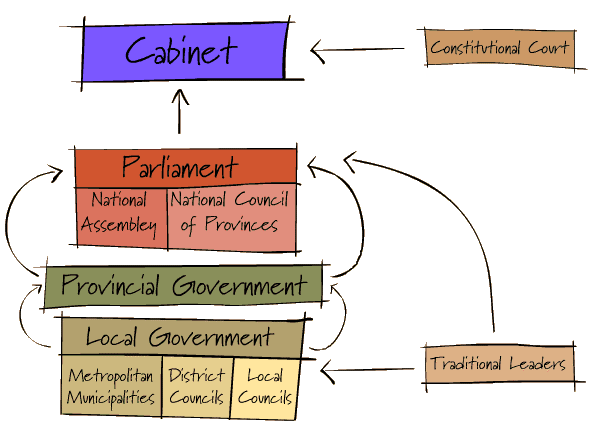
South Africa has a hierarchical structure of government and administration, which is based on a democratic system of governance. The country’s political structure can be divided into several levels, each with its own set of responsibilities and authorities.
Operating at both national and provincial levels are advisory bodies drawn from South Africa’s traditional leaders. It is a stated intention in the Constitution that the country be run on a system of cooperative governance. The government is committed to the building of a free, non-racial, non-sexist, democratic, united, and successful South Africa.
Executive Branch: The Executive Branch of the South African government holds a pivotal position within the country’s hierarchical structure. At its helm is the President, who serves as both the head of state and government. The President is elected by the National Assembly and plays a central role in shaping and implementing national policies. The Executive Branch includes various ministries and government departments, each headed by a minister appointed by the President. These ministries are responsible for specific areas of governance, such as finance, education, health, and defense. The Executive Branch wields executive powers, and it is tasked with executing and enforcing the laws passed by the legislature. It is also responsible for managing the day-to-day affairs of the nation, addressing domestic and international issues, and overseeing the implementation of government programs. As the highest level of government authority, the Executive Branch plays a crucial role in ensuring the effective functioning of the South African state and the delivery of essential services to its citizens.
Legislative Branch: In the hierarchical structure of the South African government at the federal level, the Legislative Branch is primarily embodied by the National Assembly and the National Council of Provinces (NCOP), both of which play integral roles in the legislative process of the country. The National Assembly, as the lower house of Parliament, consists of Members of Parliament (MPs) elected by the citizens through proportional representation. It holds the key responsibility of formulating and passing national legislation, as well as overseeing the activities of the executive branch. The National Council of Provinces, on the other hand, represents the interests of South Africa’s nine provinces and ensures that provincial concerns are considered in the national legislative process. This dual legislative structure, along with its adherence to democratic principles, facilitates a system of checks and balances in federal governance, allowing for the equitable representation of both national and provincial interests in the legislative decision-making process.
Judicial branch: In the hierarchical structure of the South African government at the federal level, the judicial branch occupies a pivotal role as an independent and impartial arbiter of the law. At the pinnacle of this hierarchy is the Constitutional Court, the highest judicial authority in the country, tasked with ensuring the constitutionality of all laws and government actions. Below it are the Supreme Court of Appeal and the High Courts, which handle appeals and cases of significant legal consequence. Judges in these courts are appointed based on their legal expertise and experience and are tasked with interpreting and applying the law fairly and consistently. The judiciary plays a crucial role in upholding the rule of law, safeguarding individual rights, and ensuring justice for all South Africans. Its independence from the executive and legislative branches is a cornerstone of South Africa’s democratic system, serving as a check on government power and contributing to the country’s commitment to the principles of constitutional democracy.
Province Level: South Africa is divided into nine provinces, each with its own provincial government and administrative structure. The hierarchical structure of South Africa at the province level typically follows a similar pattern across all provinces, with some variations in specific roles and responsibilities. Here’s an overview of the hierarchical structure at the provincial level in South Africa:
Premier: At the top of the provincial hierarchy is the Premier. The Premier is the head of the provincial government and is typically the leader of the political party that has the majority in the provincial legislature. The Premier is responsible for overseeing the administration of the province, representing the province at the national level, and setting the policy direction for the province.
Executive Council (Cabinet): The Executive Council, often referred to as the Provincial Cabinet, consists of Members of the Executive Council (MECs) appointed by the Premier. Each MEC is responsible for a specific portfolio, such as education, health, finance, or public works. The Executive Council assists the Premier in making decisions and implementing policies at the provincial level. It plays a crucial role in managing provincial affairs.
Provincial Legislature: The Provincial Legislature is the legislative body at the provincial level. It is responsible for making laws and regulations that pertain to the province. The legislature consists of Members of the Provincial Legislature (MPLs) who are elected by the citizens of the province during provincial elections. The number of MPLs in each province depends on the province’s population.
Speaker of the Provincial Legislature: The Speaker is responsible for presiding over the proceedings of the Provincial Legislature. They ensure that debates are conducted orderly and that legislative processes are followed.
Standing Committees: Within the Provincial Legislature, there are various standing committees responsible for specific areas of governance, such as finance, education, health, and public works. These committees review and scrutinize proposed legislation and government actions related to their respective areas.
Provincial Departments: Each provincial government is divided into various departments, each headed by an MEC. These departments oversee the implementation of government policies and provide public services in areas such as health, education, transportation, and social services. Departments are further divided into units or directorates responsible for specific functions within the department.
Municipalities: Provinces are further divided into municipalities, which are responsible for local government and the delivery of essential services to communities. Municipalities have their municipal councils and mayors. Municipalities are organized hierarchically with local councils, municipal managers, and various municipal departments responsible for services like water, sanitation, and local infrastructure.
The Constitution
South Africa’s Constitution is one of the most progressive in the world and enjoys high acclaim internationally. Human rights are given clear prominence in the Constitution. The Constitution of the Republic of South Africa, 1996 was approved by the Constitutional Court on 4 December 1996 and took effect on 4 February 1997. The Constitution is the supreme law of the land. No other law or government action can supersede the provisions of the Constitution.

The Preamble: The Preamble states that the Constitution aims to heal the divisions of the past and establish a society based on democratic values, social justice, and fundamental human rights, improve the quality of life of all citizens, and free the potential of each person, lay the foundations for a democratic and open society in which government is based on the will of the people, and in which every citizen is equally protected by law, and build a united and democratic South Africa that can take its rightful place as a sovereign state in the family of nations.
Founding provisions: South Africa is a sovereign and democratic state founded on the values of human dignity, the achievement of equality, the advancement of human rights and freedom, non-racialism, and non-sexism, the supremacy of the Constitution, and universal adult suffrage, a national common voters’ roll, regular elections, and a multiparty system of democratic government to ensure accountability, responsiveness, and openness.
Fundamental rights: The fundamental rights contained in Chapter 2 of the Constitution seek to protect the rights and freedom of individuals. The Constitutional Court guards these rights and determines whether actions by the state are by constitutional provisions.
Amendments: South Africa’s constitution, adopted in 1996, has been amended 18 times. These amendments have been made to address various issues and adapt the constitution to changing circumstances. Some of the key amendments include changes related to the structure of government, the powers of provincial governments, and provisions concerning land reform and property rights. Notably, many of the amendments have aimed to enhance the protection of human rights and promote social justice, reflecting South Africa’s commitment to a democratic and inclusive society. Amendments to the constitution are made through a deliberate and transparent process, often involving public consultation and the approval of Parliament, ensuring that the document remains a living instrument capable of addressing the evolving needs and challenges of the nation.
Federal Government
Executive Branch: The executive on a national level consists of the President, the Deputy President, ministers, and deputy ministers. On a provincial level, the executive branch consists of the Premier and Members of the Executive Council (MECs) — think of them as provincial ministers. The executive is empowered to develop and implement national policy and coordinate the functions of government. The executive also has the power to propose changes to existing legislation and initiate new policies. The Executive Branch includes various ministries and government departments, each headed by a minister appointed by the President. These ministries are responsible for specific areas of governance, such as finance, education, health, and defense.
Legislative branch: The Parliament of the Republic of South Africa is South Africa‘s legislature; under the present Constitution of South Africa, the bicameral Parliament comprises a National Assembly and a National Council of Provinces. The current twenty-seventh Parliament was first convened on 22 May 2019. From 1910 to 1994, members of Parliament were elected chiefly by the South African white minority. The first elections with universal suffrage were held in 1994. Both chambers held their meetings in the Houses of Parliament, Cape Town which were built 1875–1884. The National Council of Provinces, on the other hand, represents the interests of South Africa’s nine provinces and ensures that provincial concerns are considered in the national legislative process. This dual legislative structure, along with its adherence to democratic principles, facilitates a system of checks and balances in federal governance, allowing for the equitable representation of both national and provincial interests in the legislative decision-making process.
Judicial branch: The third branch of the national government is an independent judiciary. The judicial branch interprets the laws, using as a basis the laws as enacted and explanatory statements made in the Legislature during the enactment. The legal system is based on Roman-Dutch law and English common law and accepts compulsory ICJ jurisdiction, with reservations. The Constitution’s Bill of Rights provides for due process including the right to a fair, public trial within a reasonable time. The judiciary plays a crucial role in upholding the rule of law, safeguarding individual rights, and ensuring justice for all South Africans. Its independence from the executive and legislative branches is a cornerstone of South Africa’s democratic system, serving as a check on government power and contributing to the country’s commitment to the principles of constitutional democracy.
Provincial government
South Africa is divided into nine provinces, each of which has its provincial government. The provincial government structure in South Africa is outlined in the country’s constitution and follows a similar framework across all provinces. Here’s an overview of how the provincial government structure is organized in South Africa:
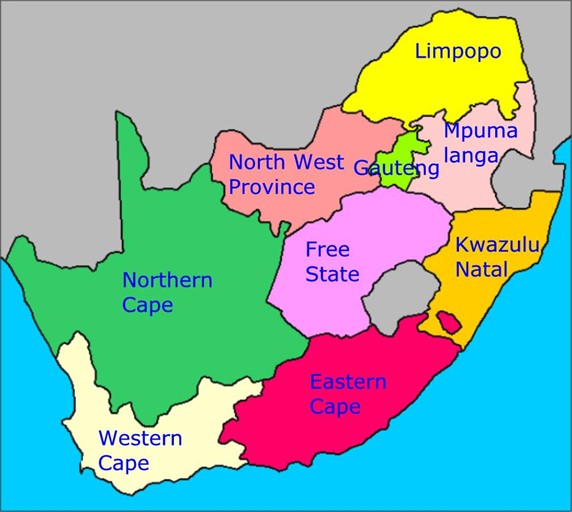
Premier: Each province is led by a Premier who is the head of the provincial government. The Premier is typically the leader of the political party that holds the majority in the provincial legislature, and they are responsible for appointing members of the provincial executive council.
Provincial Legislature: The provincial legislature is the legislative body in each province and is responsible for making and passing laws specific to that province. The number of members in a provincial legislature is determined by the population of the province, with each province having a different number of seats. Members of the provincial legislature (MPLs) are elected by the citizens of the province through a proportional representation system in general elections.
Provincial Executive Council (PEC): The PEC, also known as the provincial cabinet, is composed of Members of the Executive Council (MECs) appointed by the Premier. Each MEC is responsible for a specific portfolio or department, such as education, health, finance, and transportation. The PEC is collectively responsible for implementing and overseeing provincial government policies and programs.
Provincial Departments: The provincial government is divided into various departments, each responsible for a specific area of public policy and administration. These departments handle various functions such as education, health, social development, agriculture, public works, and more. Heads of provincial departments (HODs) are responsible for managing the day-to-day operations of their respective departments.
Provincial Budget: The provincial government is responsible for managing its budget, which is allocated from the national government’s revenue. The provincial legislature plays a crucial role in approving the provincial budget, which is then managed and executed by the provincial departments under the guidance of the PEC.
Provincial Powers and Responsibilities: Provinces have legislative authority in certain areas specified in the Constitution, such as education, health, agriculture, and housing. They also have the power to levy certain taxes and generate revenue for provincial services. The provincial government works in collaboration with national and local governments to provide essential services to citizens within its jurisdiction.
It’s important to note that while provinces have a degree of autonomy and control over certain policy areas, the national government in South Africa still retains significant authority and responsibilities, including matters related to defense, foreign affairs, and national economic policy. The provincial government structure is designed to ensure decentralized governance and responsiveness to the needs of the local population.
South Africa’s electoral system
National and provincial elections: In South Africa, we use a PR system to vote for parliament and provincial legislatures. Parliament has 400 seats and each of the nine provincial legislatures has between 30 and 90 seats depending on the number of people who live in the province. Provincial and national elections are held together and must take place every five years. Voters vote for the national and provincial legislatures on separate ballot papers.
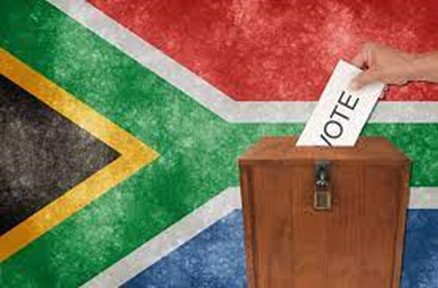
The elections are run by an Independent Electoral Commission (IEC) which administers every part of the elections to ensure that they are free and fair. All registered political parties are represented on a Party Liaison Committee that gives advice to and gets information from the IEC
Before the elections, political parties draw up a list of candidates for each of the legislatures they wish to contest. For the national assembly, parties can submit half their candidates on a national list and half on provincial lists. When the results are announced the IEC works out how many people from each party list should take up seats in the legislatures.
Local elections (municipal): There are three different categories of municipalities in South Africa, and they have slightly different electoral systems.
Metropolitan municipalities (Category A): Metropolitan municipalities exist in the six biggest cities in South Africa. They have more than 500 000 voters and the metropolitan municipality co-ordinates the delivery of services to the whole area. There are metropolitan municipalities in Johannesburg, Cape Town, Ethekweni (Durban), Tshwane (Pretoria), Nelson Mandela (Port Elizabeth) and the Ekhuruleni (East Rand). These municipalities are broken into wards. Half the councilors are elected through a proportional representation ballot, where voters vote for a party. The other half are elected as ward councilors by the residents in each ward.
Local municipalities (Category B): Areas that fall outside of the six metropolitan municipal areas are divided into local municipalities. There is a total of 231 of these local municipalities and each municipality is broken into wards. The residents in each ward are represented by a ward councilor. Voters in these municipalities also vote for district councils. Half the local councilors are elected through a proportional representation ballot, where voters vote for a party. The other half are elected as ward councilors by the residents in each ward. Only people who live in low-population areas, like game parks, do not fall under local municipalities. The areas are called district management areas (DMA) and fall directly under the district municipality.
District municipalities (Category C): District municipalities are made up of several local municipalities that fall in one district. There are usually between 4 – 6 local municipalities that come together in a district council and there are 47 district municipalities in South Africa. The district municipality must coordinate development and delivery in the whole district. The district council is made up of two types of councilors:
Elected councilors: They are elected to the district council on a proportional representation ballot by all voters in the area. (40% of the district councilors)
Councilors: who represent local municipalities in the area are local councilors sent by their council to represent it on the district council. (60% of the district councilors)
Who can vote? All South African citizens over the age of 18 who are registered voters are allowed to vote in elections. You need an ID book to vote. Voters are registered to a particular voting district and in local elections may only vote at the voting station in that district. For national and provincial elections voters should still vote where they are registered, but in some cases are allowed to vote outside the voting district if they have proof that they are registered.
Voter registration: South Africa is divided into about 19,000 voting districts, each with its voting station. To vote, you must be on the voter’s roll for your voting district.
Registration works like this:
- You need a green ID book with a bar code (issued after 1986) or a temporary ID document.
- Go to the voting station on a public registration day (or the municipal office on a normal working day) and fill in a form to show that you live in the area.
- A special machine (Zip–Zip) will be available in each voting district it can read the bar code in your ID book and automatically record the correct information about your name and ID number for the voter’s roll.
- The machine also prints a sticker that will be pasted in your ID book to show that you have registered at that voting station.
The IEC has the whole voters roll on one national computer and when you register the computer will check if your ID number already appears somewhere else. If it does, the computer will automatically cancel your registration at your old voting district and only accept the latest registration.
The rights of voters and political parties
- Voters have the right to a secret vote – No one may know who you voted for.
- Voters have the right to choose, no one may force, intimidate, or bribe a voter to vote or not vote for a party.
- Voters have the right to vote, no one may stop you from voting by forcing you to work or by preventing you from getting to the voting station.
- Voters have a right to get information from parties one may stop parties or candidates from reaching voters.
Political parties and their candidates are bound by the Electoral Code of Conduct which forms part of the Electoral Act. Political parties that break the Code can be fined, stopped from working in an area, or have their votes in an area canceled. An individual who breaks the Code or commits other offenses under the Electoral Act can be fined or jailed.
Political parties
The African Christian Democratic Party: The African Christian Democratic Party is a South African political party founded in 1993. It aspires to bring ‘stability, prosperity, and hope’ to the nation and values ‘unity with diversity’, offering leadership of trust and integrity with a passionate commitment to addressing the needs of all the people of South Africa. The African Christian Democratic Party brings to South Africa hope for a strong, healthy prosperous, and purpose-driven nation. It is a political party standing for Christian Democratic principles and recognizes that vibrant, healthy families are the building blocks of a strong, value-based society. The ACDP stands for a ‘shared future’ and is determined to provide reliable, trustworthy leaders who are passionate about addressing the needs and improving the lives of all South Africans. We value unity and diversity and are committed to protecting freedom of religion and family integrity. The ACDP is your hope for a great future.
The Al Jama-ah Political Party: The Al Jama-ah Political Party was established in 2007 by its Party Leader, Ganief Hendricks, that instead of finger-pointing, Muslims could play a sincere and positive role, contributing to the transformation of post-Apartheid South Africa, for the benefit of all South Africans. The Constitution of South Africa supports the system of a multi-party democracy, as opposed to a single-party state. According to The African Peer Review Mechanism (APRM), the domination of one political party in South Africa will be detrimental to freedom in South Africa. What is best for South Africa is a diversity of political parties with competing policies.
African National Congress: The African National Congress(ANC) is a national liberation movement. It was formed in 1912 to unite the African people and spearhead the fundamental political, social, and economic change struggle. For ten decades the ANC has led the struggle against racism and oppression, organizing mass resistance, mobilizing the international community, and taking up the armed struggle against apartheid. The ANC achieved a decisive democratic breakthrough in the 1994 elections, where it was given a firm mandate to negotiate a new democratic Constitution for South Africa. The new Constitution was adopted in 1996. The ANC was re-elected in 1999 to national and provincial governments with an increased mandate. The policies of the ANC are determined by its membership and its leadership is accountable to the membership.
Economic Freedom Fighters: The Economic Freedom Fighters (EFF) is a radical and militant economic emancipation movement, formed in the year 2013 to bring together revolutionary, militant activists, community-based organizations as well as lobby groups under the umbrella of the political party pursuing the struggle of economic emancipation.
Inkatha Freedom Party (IFP): The IFP has three key values. These are Solidarity, Freedom, and Unity in Diversity. They are all interconnected. Each is associated with other, secondary values. In our service to the people, the IFP will stand by those affected by poverty, unemployment, abuse, crime, violence, discrimination, and other social ills. South Africa has an enormous number of people who left to the exigencies of the market or a minimalist state, would suffer even more severe depredations than those that fate has bestowed upon them. The IFP will not stand aloof as our people suffer but will work with them, assisting in an expression of compassion and fraternity.
Immigration System of South Africa
- Immigration Overview
- Types of Immigration
- Asylum
- The Asylum Process
South African Immigration Overview
Immigration in the South African context involves the movement of individuals from other countries to South Africa to establish permanent or semi-permanent residence. South Africa, with its diverse culture, economy, and natural beauty, is a popular destination for immigrants from various African and non-African countries. Here are the major elements and factors associated with immigration in South Africa:
Push and Pull Factors: Like other countries, immigration to South Africa is driven by push and pull factors. Push factors from the immigrants’ home countries may include political instability, economic hardship, conflict, and persecution. Pull factors in South Africa include better job opportunities, a relatively stable political environment, access to social services, and the country’s natural beauty.
Immigrant Categories: South Africa hosts a diverse range of immigrant categories, including economic migrants and individuals seeking better job prospects and economic opportunities in sectors like mining, agriculture, and services. People fleeing violence, persecution, and conflict in their home countries often seek asylum in South Africa. Immigrants who come to join family members already residing in the country. South Africa is a destination for students pursuing higher education. Some immigrants come to invest in businesses in South Africa, contributing to economic growth.
Immigration Policies: South Africa has immigration policies and laws that regulate who can enter and stay in the country. These policies include visa requirements, work permits, and regulations specific to different immigrant categories.
Visas and Documentation: Immigrants typically need visas and documentation to enter and reside legally in South Africa. The type of visa required depends on the immigrant category and the purpose of their stay.
Integration: Successful immigration in South Africa often involves the process of integration, where immigrants adapt to the local culture, learn languages like English and one or more of South Africa’s official languages, and contribute to the economy and society.
Economic Impact: Immigrants can contribute to South Africa’s economy by filling labor gaps, investing in businesses, and contributing to innovation. However, immigration can also be a source of competition for jobs and resources, leading to social and economic tensions.
Social and Cultural Impact: Immigration in South Africa has enriched the country’s cultural diversity but has also posed challenges related to cultural assimilation, language barriers, and social cohesion.
Security and Border Control: like many countries, South Africa has measures in place to control its borders and ensure the security of its citizens. These measures include border control agencies, immigration enforcement, and efforts to combat human trafficking and illegal immigration.
Humanitarian Considerations: South Africa is a signatory to international conventions on refugees and asylum seekers, which means the government has obligations to provide protection and assistance to those in need.
Public Opinion and Politics: Immigration is a contentious issue in South Africa, and public opinion and government policies can vary. Immigration often features prominently in political discourse and can influence elections and policy decisions.
Xenophobia: South Africa has experienced incidents of xenophobia, where foreign nationals have been targeted in violence and discrimination. These incidents underscore the need for addressing social tensions and fostering inclusivity.
Global Migration Trends: South Africa’s immigration patterns are influenced by global trends, including regional conflicts, economic developments, and climate change.
In summary, immigration in the South African context is shaped by a combination of factors, including economic, political, social, and humanitarian considerations. South Africa needs to have effective immigration policies that balance the country’s economic and humanitarian interests while addressing social and cultural challenges.
Immigration Types
Immigration to South Africa means applying for a visa. These visas and permits are issued by the Department of Home Affairs for immigrants seeking Immigration to South Africa. The type of immigration permit or visa, that immigrants should apply for is dictated by the activity they wish to undertake when they relocate to South Africa. Below are introductions to the main different types of permits and visas that can be applied for when seeking Immigration to South Africa.
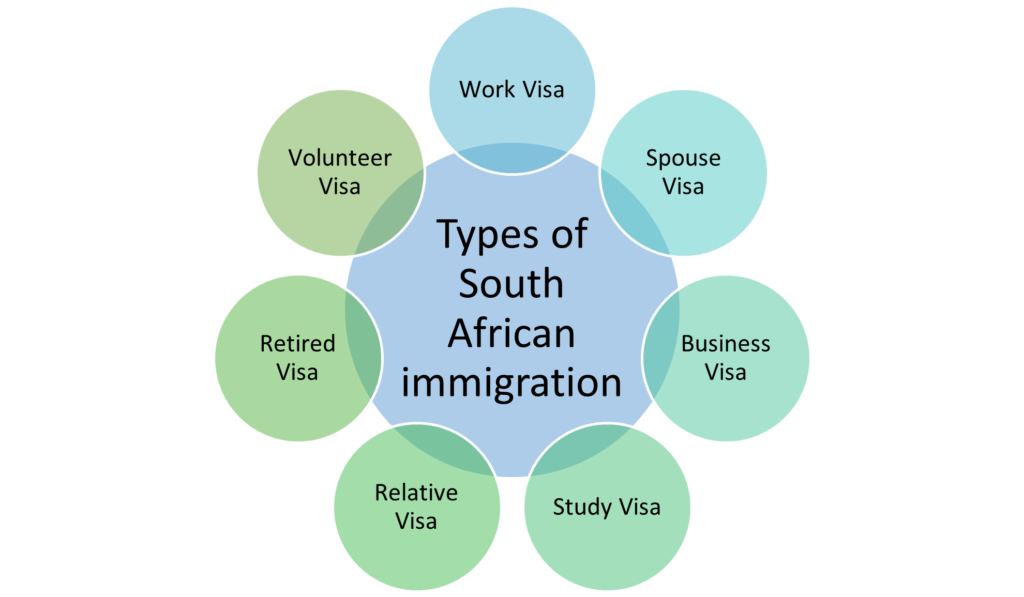
Work Visa: There are four work visas provided for by the South African Immigration Act Critical skills work visa, In this visa, You must have a job offer, your occupation must appear on South Africa’s critical skills list, and you must register with the relevant professional body. In a General work visa, You must have a formal job offer to apply and your future employer must be able to prove that they could not find a suitable South African resident or citizen to fill the position. Intra-company transfer work visa is to transfer employees from an overseas company to a South African branch, affiliate, or subsidiary. In a Corporate visa, the application process starts with a company that wants to employ a large number of employees for an extended period.
Spouse Visa: Spousal permits/visas for immigration to South Africa are issued in the case of a husband or wife of a South African citizen or permanent residence holder wishing to immigrate to South Africa. A spousal visa is a temporary visa that is normally issued for 2 to 3 years, whereas a spousal permit is for permanent residency that allows for an indefinite stay in South Africa. As with most applications to the Department of Home Affairs; various documents need to be completed and supporting evidence supplied. One of the main items is the proof that the marriage is valid; this is achieved simply by submitting the marriage certificate as part of the application.
Business visa: A business visa in South Africa can be applied for by those seeking temporary and /or permanent residency in the Republic and wishing to set up and run their own business. The business can be a start-up, a purchased company, or a partnership. All the normal eligibility criteria apply to a business visa application but in addition, prospective applicants should be aware of The need for a capital equivalent or cash investment of at least ZAR 5 million into the business via funds from abroad; the need for 60% of your workforce to be South African citizens or permanent residency holders; and should also be aware of the setting up of a suitable company structure and comprehensive business plan.
Study Visa: The study visa for South African immigrants serves as a critical gateway for international students seeking to pursue educational opportunities within the country’s diverse and vibrant academic landscape. South Africa, with its world-class universities and institutions, has become an increasingly popular destination for students from various corners of the globe. This visa category allows foreign nationals to enroll in accredited educational programs, ranging from undergraduate to postgraduate levels and offers them the chance to immerse themselves in South Africa’s rich cultural tapestry. The study visa not only provides access to quality education but also fosters cross-cultural exchanges, contributing to the nation’s intellectual and social growth. It plays a pivotal role in attracting international talent and building global partnerships, positioning South Africa as an educational hub on the African continent and beyond.
Relative Visa: The South African Immigration Act allows applications for permanent residence from those who have a first-kin relationship with either a South African Permanent Resident or Citizen. This category of permit is known as a relative’s permit. The regulations that govern the relatives permit define a first-kin relationship as Parent and Child. Therefore, an immigration application, under the relatives permit can be made by the Child of a South African citizen or permanent residence holder or Parent of a South African citizen or permanent residence holder.
Retired Visa: A retired permit, visa, as a means of immigration to South Africa, is granted to immigrants wishing to spend their retirement years in South Africa. For immigration to South Africa, under the category of a retired permit, the criteria are based on the premise that the immigrant is not looking to work, study, or carry out their own business. As with all permit applications and visa applications associated with immigration to South Africa, several criteria must be satisfied including that there are no age restrictions on a retired persons permit, either for a minimum age or maximum, Applications for retired person permits can be made under the temporary and permanent categories, Both income and capital can be used when a temporary or permanent retired person permit is being applied for and Pension, retirement or an irrevocable annuity and other lifetime guaranteed income can be utilized when applying for a Permanent Residency in the Retired Persons category.
Volunteer visas: Volunteer visas are required for all foreigners who wish to take up non-remunerative or charitable activities with bona fide institutions within South Africa. Amongst the requirements applicants will need to provide a statement confirming the purpose and duration of the visit, Proof of sufficient financial means, and In the case of a sojourn not exceeding 12 months, submission of proof of a valid return air ticket.
Asylum
Asylum is a legal status and protection granted by a country to individuals who have fled their home countries due to a well-founded fear of persecution based on factors such as their race, religion, nationality, political opinion, or membership in a particular social group. Asylum allows these individuals to seek refuge and protection in another country, as they are unable or unwilling to return to their home country due to the fear of persecution.
The process for seeking asylum in South Africa generally follows a specific set of steps, although it’s important to note that immigration and asylum procedures may change over time, so it’s advisable to consult with the South African Department of Home Affairs or a legal expert for the most up-to-date information. As of my last knowledge update in September 2021, here is a general overview of the asylum process in South Africa.
Application process: Individuals seeking asylum must first arrive in South Africa and present themselves to immigration authorities or border officials. Once in South Africa, individuals must proceed to one of the Refugee Reception Offices (RROs) or a designated Port of Entry to lodge their asylum application. There, they will be given a date for their first interview. At the initial interview, the asylum seeker will provide information about their reasons for seeking asylum and their fear of persecution in their home country. This information will be recorded and used as part of the assessment process.
Refugee Status Determination (RSD) Process: After the initial interview, the asylum seeker will undergo a Refugee Status Determination (RSD) process to assess the validity of their claim. This process typically involves a series of interviews, background checks, and investigations to establish whether the individual meets the criteria for refugee status under South African law.
Documentation and Refugee Status: If the authorities determine that an individual qualifies for refugee status, they will be issued with the necessary documentation, including a Refugee ID card. This documentation grants them legal protection and certain rights within South Africa. If an asylum application is rejected, there may be opportunities for the applicant to appeal the decision through h the appropriate legal channels.
Asylum Benefits: Asylum benefits refer to the rights and protections granted to individuals who have been granted asylum in a host country. These benefits are essential for ensuring the safety, well-being, and integration of asylum seekers into their new communities. Key asylum benefits typically include legal protection from deportation to their home country, the ability to work and access education, healthcare, and social services on par with the host country’s citizens or residents, and the opportunity to eventually apply for permanent residency or citizenship.
Permanent residency or citizenship: In South Africa, permanent residence and citizenship are two significant milestones for individuals who have been granted asylum. Once an individual has been recognized as a refugee in South Africa, they are entitled to certain rights and opportunities regarding permanent residence and citizenship.
Permanent Residence: Asylum seekers who have been granted refugee status can apply for permanent residence in South Africa. Permanent residence status allows them to live and work in the country indefinitely, with the same rights as South African citizens, including access to education, healthcare, and social services. To obtain permanent residence, refugees typically need to meet certain residency requirements and demonstrate their commitment to contributing positively to South African society. It’s important to note that the specific requirements and procedures for permanent residence may vary, so it’s advisable to consult with the South African Department of Home Affairs for the most up-to-date information.
Citizenship: After holding permanent residence for a specified period, refugees may become eligible to apply for South African citizenship through naturalization. The requirements for naturalization usually include a minimum period of residence, good moral character, and an adequate knowledge of South Africa’s official languages, among other criteria. Once granted South African citizenship, individuals enjoy the same rights and responsibilities as any other citizen, including the ability to vote and participate fully in the country’s civic and political life.
It’s essential to note that the process for obtaining permanent residence and citizenship in South Africa can be complex and may change over time. As such, individuals interested in pursuing these options should seek legal advice and guidance from immigration authorities or experts to ensure they understand the current requirements and procedures applicable to their specific situation.
Asylum Process
The Department for Home Affairs of the South African government runs the asylum process in South Africa. You can read about the process in the Refugees Act (see Sections 21, 22, and 24) together with the Refugees Act Regulations (see Sections 2, 7, 8, and 14) and the Immigration Act (section 23).
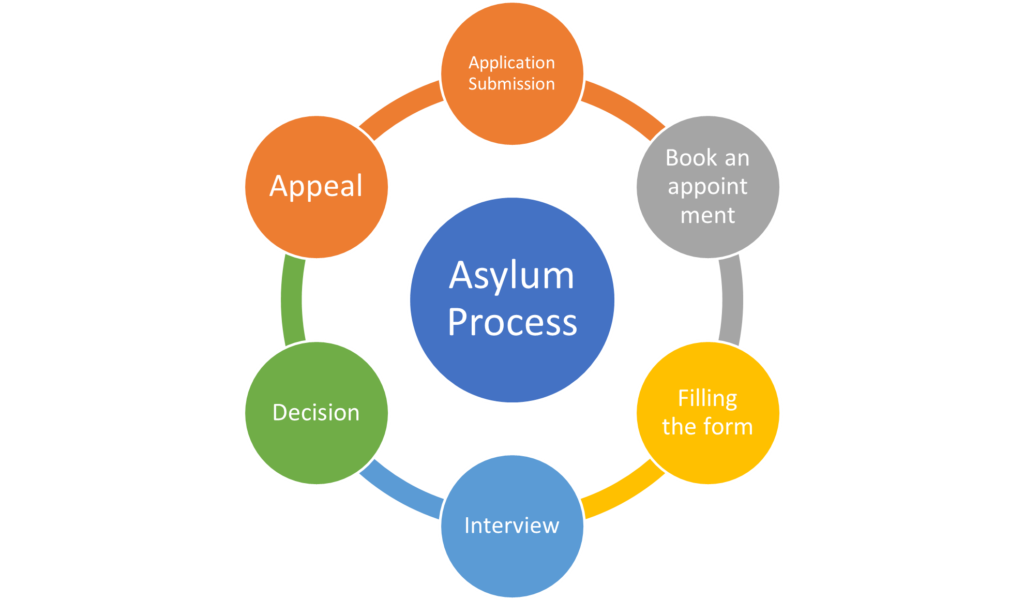
Application Process: The Department of Home Affairs of the South African government runs the asylum process in South Africa. If you have come to South Africa to seek asylum, it is important to apply for asylum as soon as you arrive in South Africa.
You will need an appointment at a Refugee Reception Office to apply for asylum. Choose a Refugee Reception Office where you want to apply for asylum.
Your choices are:
- Cape Town Refugee Reception Office
- Durban Refugee Reception Office
- Desmond Tutu Refugee Reception Office (Pretoria)
- Musina Refugee Reception Office
- Gqeberha Refugee Reception Office (formerly Port Elizabeth)
Remember you will need to travel to this office at your own cost, so choosing the one closest to where you live is important.
Appointment booking process: Send an email to the Department of Home Affairs and make sure you use your email account. If you do not have an email account, you will have to create one. You should use an email account that you can access in the future so that you can receive the Department of Home Affairs’ replies to you.
When you send your email to the Department, the email message must have the name of the Refugee Reception Office in the subject line (for example, Durban Refugee Reception Office or Desmond Tutu Refugee Reception Office – Pretoria, etc.), your full name and contact number in the body of the email and you can write in the email, “I want to apply for asylum in South Africa”. You must email the Department of Home Affairs at [email protected] for an appointment. Complete the form that the Department of Home Affairs sends you back.
Fill out the Form: After you have emailed the Department of Home Affairs, they will send you back a form to complete (make sure to check your Junk and Spam folders). This form is called “Request for Appointment to Apply for Asylum.”
When you are completing the form, remember that you can complete this form digitally on a computer OR print it out and complete it by hand. All the information must be true and correct. You must list all your family members that are with you in South Africa (for example, wife, husband, children, elderly family). You do not need a copy of your passport to apply for asylum. Only attach copies of supporting documents that you have with you. Examples of supporting documents include birth certificates, marriage certificates, and identity documentation from your home country.
You will have to scan the completed form and documents or take clear photographs on your phone to attach the images to the email. Ensure you attach the completed form to the email and any supporting documents before sending it back to the Department of Home Affairs.
You must send the completed form and the scans or images of any documents back to the Department of Home Affairs at [email protected]. Go to the Refugee Reception Office on your appointment date.
Once you have sent your email, the Department of Home Affairs will send you another email with your appointment details (date, location, and time). You will have to go to the Refugee Reception Office you chose on the day of your appointment with your family.
At the appointment at the Refugee Reception Office: You will have to provide your biometrics (photographs and fingerprints). All family members listed in the form sent to the Department of Home Affairs will have to be present to give their biometrics. You will be asked to give brief reasons about why you are seeking asylum in South Africa. After applying for asylum, you and your dependents must be given an asylum-seeker visa. Each family member should be given an asylum-seeker visa (also known as a ‘Section 22 permit’). Make copies of these documents and always keep them very safe. You will have an interview with a Refugee Status Determination Officer. The interview could happen on the day you make your asylum application, or you could be asked to come on a different day for this interview.
Interview: You will have to complete an interview with a Refugee Status Determination Officer. During your interview, remember the Refugee Status Determination Officer must explain the procedure to you. The Refugee Status Determination Officer should ask you why you fled your country and why it may be unsafe to return. The Refugee Status Determination Officer may request evidence or more details on what you tell them. Your husband or wife may be interviewed separately. The interview must be recorded, and you should be given the help of an interpreter if you need one. You must tell the truth during your interview. If it is discovered that you provided false, dishonest, or misleading information, your asylum application may be rejected.
Decision: After the interview the Refugee Status Determination Officer must provide you with a decision. They might give you the decision immediately after the interview or ask you to come back on another day for the decision. You should receive the decision in writing. The decision may be to grant you refugee status, or it may be to reject your claim for asylum as unfounded or manifestly unfounded, fraudulent, or abusive.
What happens if you are recognized as a Refugee? This means the Department of Home Affairs has given you asylum, and you may remain in South Africa. Recognized refugees living in South Africa have rights and responsibilities. Your recognition of refugee status document (also known as ‘Section 24 permit’) should Be valid for four years and be given to the main file holder and all dependent family members (spouse, children, dependent family members included in the first asylum application or added to the file later). You will have to reapply for a refugee status document at least 90 days before it expires. You should apply for an identity document immediately (this ‘refugee ID’ is valid for the same period as the refugee status document).
What happens if you are not recognized as a Refugee? This means the Refugee Status Determination Officer has decided to reject your asylum application. The rejection as ‘unfounded’ and the reasons for the rejection should be written in the Refugee Status Determination Officer’s written decision. If you do not agree with this decision or how the Refugee Status Determination Officer made the decision, you have a right to appeal to the Refugee Appeals Authority. The Refugee Appeals Authority will then look at the Refugee Status Determination Officer’s decision and make a
final decision about your asylum application.
Appeal: After considering your appeal, the RAASA may decide one of the following:
To uphold your rejection and issue a final rejection which means your asylum claim has failed and you can no longer legally remain in South Africa. You will be notified of how many days you have in South Africa before you must leave the country. A ‘judicial review ‘is the only way to challenge this decision. You will need a lawyer for this; see the section on Judicial Reviews below. You will need a lawyer for this, see Legal Assistance for a list of UNHCR’s partner organizations to contact.
To grant refugee status means the RAASA has overturned your first rejection and recognized you as a refugee. You must be provided with a refugee recognition document.
To send your application back to the Refugee Status Determination Officer which means the RAASA wants the Refugee Status Determination Officer (RSDO) to consider your application again. You will then be re-interviewed by the RSDO for a new decision on your asylum application.
There is no set time within which the Refugee Appeals Authority must decide on an appeal. There is a backlog of cases with the Refugee Appeals Authority, which means it may take a long time for your appeal to be decided.
What if you receive a final rejection? If the Refugee Appeals Authority or the Standing Committee for Refugee Affairs gives you a final rejection, you will no longer be able to stay in South Africa legally. This means your asylum application has failed, and you will be given a written notice to leave the Republic of South Africa. If you remain in South Africa, you risk deportation back to your home country. If you cannot return to your home country because it is still unsafe or your life and safety might be at risk, you can challenge the final decision with a judicial review. A judicial review means you will take the Department of Home Affairs to the High Court to challenge the final rejection of your asylum application.
Source and more information
South African Government: Department of Home Affairs: Refugee Status & Asylum
Refugees Act [No. 130 of 1998] and Refugees Regulations
Scalabrini Centre of Cape Town: Refugee Law in South Africa
University of Cape Town, Refugee Rights Unit: Refugee Status Determination Manual
Financial System of South Africa
- Overview of South Africa’s Financial System
- Banking System
- Insurance
- Stock Market
- Bond Market
- Derivative Market
- Private equity funds, pension funds, and other non-bank financial institutions
- Government Regulations
Overview of the South African financial system
Africa is a continent made up of 53 countries. The continent is economically and culturally diverse, with different regional economic blocs. The financial systems in these countries are as diverse as the countries. South Africa’s financial system is well-developed and diverse, consisting of a robust banking sector, a major stock exchange, a thriving insurance industry, and a regulatory framework designed to oversee these entities. The country’s banking sector is served by both domestic and international banks, with the South African Reserve Bank (SARB) as its central authority.

The Johannesburg Stock Exchange (JSE) ranks among the world’s largest stock exchanges, offering a platform for trading various financial instruments. South Africa also hosts a substantial insurance sector, with companies like Old Mutual and Sanlam providing coverage. Regulatory oversight is divided between the Financial Sector Conduct Authority (FSCA), responsible for market conduct, and the Prudential Authority (PA), which focuses on prudential supervision.
The country’s pension and retirement fund industry is notable, with contributions from employers and employees alike. Additionally, South Africa has a well-developed foreign exchange market, and efforts have been made to enhance financial inclusion, especially in underserved regions. However, the financial system faces ongoing challenges related to inequality and regulatory issues, which remain priorities for policymakers in the country.
Understanding the financial system of South Africa is of paramount importance for new immigrants to the country. A robust knowledge of the financial landscape can significantly aid in their successful integration and financial stability. Firstly, familiarity with South Africa’s banking sector, including the major banks and financial institutions, is essential for managing day-to-day finances, opening accounts, and accessing banking services efficiently.
Secondly, comprehending the Johannesburg Stock Exchange (JSE) and the investment opportunities it offers is vital for those considering long-term financial growth through investments in
stocks, bonds, or other financial instruments.
Thirdly, insurance plays a crucial role in safeguarding against unexpected events. Being aware of the country’s insurance providers, their products, and the coverage they offer is crucial for ensuring financial protection.
Additionally, knowledge of the regulatory framework, including agencies like the South African Reserve Bank (SARB), the Financial Sector Conduct Authority (FSCA), and the Prudential Authority (PA), is important to understand the rules and regulations governing financial activities, consumer protection, and financial market conduct.
Understanding the pension and retirement funds available in South Africa is also vital, especially for long-term financial planning. This includes knowledge of contributions, options, and benefits.
Moreover, being well-informed about the foreign exchange market and exchange control regulations is crucial for immigrants who may have financial interests or family abroad.
Lastly, grasping the concept of financial inclusion initiatives and knowing how to access banking and financial services in underserved areas can greatly enhance financial accessibility for new immigrants.
In summary, a solid understanding of South Africa’s financial system equips new immigrants with the tools and knowledge necessary to navigate the country’s financial landscape, make informed financial decisions, and ultimately achieve financial stability and success in their new home.
Banking
Banks assist and promote the economy of a country by providing financial capital for businesses as well as a person’s personal needs. A bank encourages the people of a country to save. It allows their clients to invest surplus money that they can use for various reasons at a later stage. The bank acts as a link in various business transactions and it facilitates business between two parties. The entity uses its surplus funds from other investor’s deposits and lends them to clients who then pay them back with interest. It also assists small-scale businesses like farms by providing a line of credit.
South Africa’s banking sector is diverse and consists of various types of banks, each serving different functions and catering to distinct segments of the population. Here are the main types of banks in South Africa:
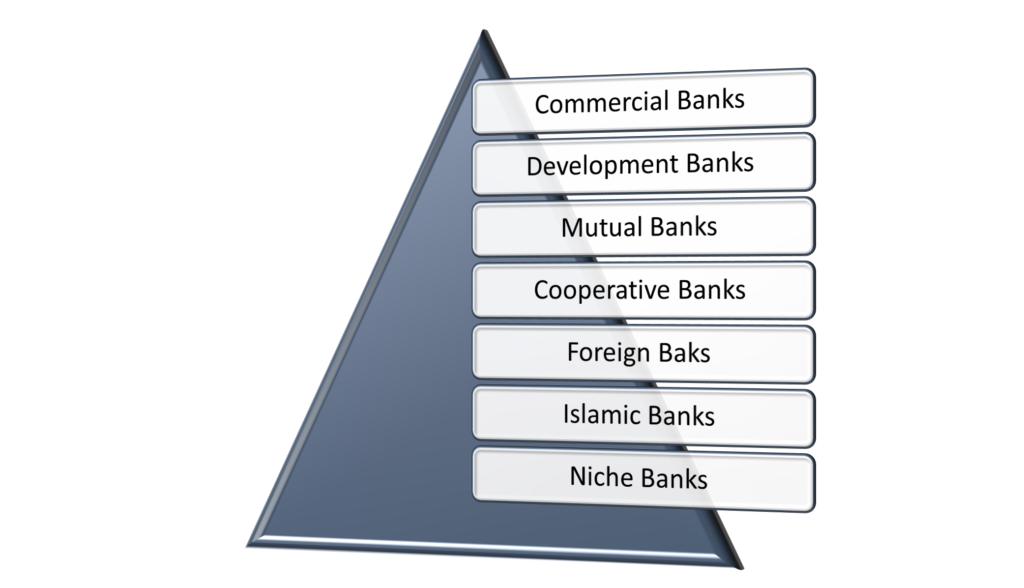
Commercial Banks: Commercial banks are the most common type of banks in South Africa, and they provide a wide range of financial services to individuals, businesses, and institutions. These banks offer services such as savings and checking accounts, loans, mortgages, credit cards, and foreign exchange services. Major commercial banks in South Africa include Standard Bank, FirstRand (which owns First National Bank or FNB), Absa Group (formerly Barclays Africa Group), Nedbank, and Capitec Bank, among others.
Development Banks: Development banks in South Africa focus on providing long-term financing and investment in various sectors of the economy to stimulate economic development and growth. The Industrial Development Corporation (IDC) is a prominent example of a development bank in South Africa, and it supports projects in industries such as manufacturing, mining, and infrastructure development.
Mutual Banks: Mutual banks in South Africa are member-owned financial institutions that offer banking services to their members. These banks operate with a cooperative structure, where members have a say in the bank’s governance and decision-making. Mutual banks may offer services like savings accounts, loans, and other banking products.
Cooperative Banks: Cooperative banks are financial institutions that operate on a cooperative basis, with members often sharing a common bond, such as a specific profession or community. These banks emphasize community development and financial inclusion. Some cooperative banks in South Africa focus on serving specific communities or sectors.
Foreign Banks: Foreign banks with branches or subsidiaries in South Africa provide services to both local and international clients. These banks can offer specialized services tailored to the needs of multinational corporations and international trade.
Islamic Banks: Islamic banking in South Africa is a specialized sector within the country’s financial system that adheres to Shariah (Islamic law) principles in its operations. Islamic banks in South Africa offer a range of financial services and products that are compliant with Islamic finance principles. These principles include the prohibition of interest (Riba), investments in businesses that engage in prohibited activities (Haram), and a focus on risk-sharing and ethical financial conduct. Islamic banks in South Africa provide services like Islamic savings accounts, Islamic home financing, and investment products that adhere to these principles. They cater to a specific segment of the population that seeks banking solutions that align with their religious and ethical beliefs.
Niche Banks: A niche bank in South Africa is a specialized financial institution that focuses on serving a specific market segment or providing financial services, often tailored to unique needs. These banks differentiate themselves from traditional commercial banks by offering specialized expertise and customized solutions. Niche banks in South Africa may target high-net-worth individuals, small and medium-sized enterprises (SMEs), or other distinct customer groups.
It’s important to note that the South African Reserve Bank (SARB) serves as the central bank and regulator, overseeing the operations of all banks in South Africa. These various types of banks contribute to the overall diversity and competitiveness of South Africa’s financial sector, offering a range of options to meet the banking and financial needs of the population and the economy.
Insurance
Insurance is an integral component of the South African financial system, providing individuals, businesses, and institutions with risk mitigation and financial protection. In South Africa, insurance is regulated by the Financial Sector Conduct Authority (FSCA) to ensure fair and transparent practices. There are several types of insurance available in the South African market:

Life Insurance: Life insurance policies provide financial protection to beneficiaries in the event of the insured person’s death. Types of life insurance in South Africa include term life insurance (providing coverage for a specified term), whole life insurance (covering the insured’s entire life), and endowment policies (combining life coverage with savings or investment components).
Health Insurance: Health insurance, often referred to as medical aid or medical insurance, covers medical expenses and healthcare services. There are various health insurance providers in South Africa, offering a range of plans with different coverage levels.
Motor Insurance: Motor insurance is mandatory for all vehicle owners in South Africa and includes two main types: comprehensive and third-party. Comprehensive motor insurance covers damage to your vehicle as well as liability for damage to others’ vehicles, while third-party insurance only covers liability for damage to others’ vehicles.
Home Insurance: Home insurance, also known as property insurance, protects homeowners against financial losses resulting from damage to their properties caused by events like fire, theft, or natural disasters. It can also include coverage for personal belongings within the home.
Business Insurance: Business insurance encompasses a wide range of policies designed to protect businesses from various risks, including property damage, liability claims, and business interruption. Common types of business insurance in South Africa include commercial property insurance, liability insurance, and professional indemnity insurance.
Travel Insurance: Travel insurance provides coverage for unexpected events that may occur while traveling, such as trip cancellations, medical emergencies, or lost luggage. It is essential for both domestic and international travel.
Funeral Insurance: Funeral insurance, also known as burial insurance, offers financial assistance to cover the costs associated with funerals and burials. It is a popular form of insurance in South Africa, given the cultural significance of funerals.
Crop and Agricultural Insurance: Agriculture is a significant sector in South Africa, and crop insurance helps protect farmers against losses due to weather-related events, pests, or crop failures.
Specialized Insurance: South Africa also offers specialized insurance products, such as marine insurance for cargo and shipping, aviation insurance for aircraft, and trade credit insurance for businesses involved in international trade.
Insurance in South Africa is essential for managing risk and ensuring financial security. The variety of insurance types allows individuals and businesses to tailor their coverage to their specific needs and circumstances. It plays a crucial role in the overall financial stability of the country by mitigating the impact of unforeseen events on individuals and the economy.
Stock Market
The stock market in South Africa, like in many other countries, is a vital component of the financial system where investors buy and sell financial instruments such as stocks, bonds, commodities, and derivatives. It serves as a platform for companies to raise capital by issuing shares to the public and for investors to trade these securities.

In South Africa, the primary stock market is the Johannesburg Stock Exchange (JSE).
The Johannesburg Stock Exchange (JSE)
Equities Market: The JSE’s equities market is the most prominent segment, where companies issue shares (equity) to raise capital and investors buy and sell these shares. It includes various indices, such as the FTSE/JSE All Share Index (ALSI), which tracks the performance of all listed companies.
Bond Market: The JSE also has a bond market where both government and corporate bonds are traded. This market allows investors to buy and sell fixed-income securities, including government bonds, corporate bonds, and other debt instruments.
Derivatives Market: The JSE’s derivatives market offers a platform for trading financial derivatives, including futures and options contracts on various underlying assets such as equities, currencies, and interest rates. This market is essential for risk management and speculation.
Commodity Market: The JSE provides a platform for trading commodity derivatives, allowing investors to participate in price movements of commodities like gold, platinum, and agricultural products.
Types of Stock Market Participants
Retail Investors: Retail investors are individual investors who buy and sell stocks and other securities for personal investment purposes.
Institutional Investors: Institutional investors include pension funds, insurance companies, and mutual funds. They manage large pools of capital and invest on behalf of their clients or policyholders.
Stockbrokers: Stockbrokers facilitate the buying and selling of securities on behalf of their clients. They can be individuals or firms licensed to trade on the JSE.
Listed Companies: These are businesses that have gone public by issuing shares that are traded on the stock exchange. They use the stock market to raise capital and allow shareholders to trade their shares.
Market Makers: Market makers are firms or individuals who provide liquidity to the market by quoting buy and sell prices for securities. They play a crucial role in ensuring a smooth trading process.
Regulators: Regulatory authorities like the Financial Sector Conduct Authority (FSCA) oversee the stock market to ensure compliance with regulations and to protect investors.
The South African stock market, particularly the JSE, is an integral part of the country’s financial system, offering investment opportunities, a source of capital for companies, and a barometer of economic health. It provides a variety of investment options for both retail and institutional investors, making it a significant driver of economic growth and wealth creation in South Africa.
Bond Market
The bond market in South Africa is a crucial component of the country’s financial system, serving as a platform for the issuance and trading of various types of debt securities. It provides a means for governments, municipalities, corporations, and other entities to raise capital by issuing bonds, while also offering investment opportunities to individuals and institutions.

Here are the main types of bonds in the South African financial system:
Government Bonds: Government bonds, also known as sovereign bonds or Treasuries, are issued by the South African government through the National Treasury. These bonds are considered low-risk investments and are often used to fund government spending and manage national debt. Different types of government bonds include fixed-rate bonds, inflation-linked bonds, and floating-rate bonds.
Corporate Bonds: Corporate bonds are debt securities issued by private corporations to raise capital for various purposes, such as expansion, refinancing, or working capital. South African companies issue corporate bonds to access alternative sources of funding beyond traditional bank loans. These bonds can offer investors a higher yield than government bonds but also come with higher credit risk, depending on the issuer’s financial health.
Municipal Bonds: Municipal bonds, also known as municipal debt securities or “muni bonds,” are issued by local municipalities, provinces, and state-owned enterprises (SOEs). The proceeds from these bonds are used to finance infrastructure projects, public services, or other local government initiatives. Investors in municipal bonds typically receive interest income that is exempt from South African income tax, making them attractive to local investors.
State-Owned Enterprise (SOE) Bonds: Certain SOEs, such as Eskom (the electricity utility) or Transnet (the transport and logistics company), issue bonds to fund their operations and infrastructure projects. These bonds may offer competitive yields, but investors should assess the creditworthiness of the specific SOE.
Supranational and Development Bonds: South Africa also participates in the issuance of bonds by supranational institutions like the African Development Bank (AfDB) or the World Bank. These bonds are often aimed at financing development projects and are considered safe investments.
Inflation-Linked Bonds: Inflation-linked bonds are designed to protect investors from the eroding effects of inflation. They provide periodic interest payments linked to the country’s inflation rate, ensuring that the real purchasing power of the investment is preserved.
Zero-Coupon Bonds: Zero-coupon bonds do not pay periodic interest; instead, they are issued at a discount to their face value and mature at face value. The return on investment comes from the difference between the purchase price and the face value.
The South African bond market is an essential part of the country’s capital markets, offering both issuers and investors a range of options to meet their financing and investment needs. Investors in the bond market can access a diverse set of instruments with varying risk and return profiles, allowing them to build balanced portfolios based on their investment objectives and risk tolerance.
Derivatives Market
The derivatives market in South Africa is a crucial component of the country’s financial system. Derivatives are financial instruments whose value is derived from an underlying asset, index, or reference rate. They are used for various purposes, including risk management, speculation, and hedging. In South Africa, the derivatives market is regulated by the Financial Sector Conduct Authority (FSCA) and operates on the Johannesburg Stock Exchange (JSE). Here are some types of derivatives commonly traded in the South African financial system:
Futures Contracts: Futures contracts are standardized agreements to buy or sell an underlying asset at a predetermined price and date in the future. In South Africa, the JSE offers futures contracts on a variety of underlying assets, including equity indices (such as the FTSE/JSE Top 40 Index), commodities (such as gold, platinum, and agricultural products), and interest rates.
Options Contracts: Options give the holder the right (but not the obligation) to buy (call option) or sell (put option) an underlying asset at a specified price within a predetermined period. The South African derivatives market includes options on equity indices and individual stocks, allowing investors to hedge their portfolios or engage in speculative trading strategies.
Currency Derivatives: South Africa’s currency derivatives market allows traders and businesses to hedge against currency exchange rate fluctuations. This market includes currency futures and options, helping participants manage the risk associated with international trade and currency exposure.
Interest Rate Derivatives: Interest rate derivatives are used to manage interest rate risk. They include instruments like interest rate futures and interest rate swaps. Market participants can use these derivatives to hedge against fluctuations in interest rates, particularly important for businesses and financial institutions.
Single Stock Futures (SSFs): SSFs are futures contracts based on the performance of individual stocks listed on the JSE. Investors use SSFs for various purposes, including hedging stock portfolios, speculating on stock price movements, and leveraging their exposure to specific stocks.
Commodity Derivatives: Commodity derivatives is also another type of derivative that deals with commodity. South Africa is a major producer of commodities like gold, platinum, and agricultural products. The JSE offers futures contracts on these commodities, allowing producers, traders, and investors to manage price risk.
Credit Derivatives: Credit derivatives are used to manage credit risk associated with debt instruments. While not as common as some other derivatives, credit default swaps (CDS) are occasionally used in South Africa to hedge against credit risk.
Equity Index Derivatives: Equity index derivatives, such as index futures and options, are linked to the performance of stock market indices. They are used for portfolio diversification, speculation on market movements, and risk management.
The derivatives market in South Africa provides valuable tools for investors and businesses to manage risk, enhance liquidity in financial markets, and access investment opportunities. However, derivatives also carry inherent risks, and market participants need to have a solid understanding of these instruments before trading them. Strict regulatory oversight ensures transparency and fairness in the South African derivatives market.
Private equity funds, pension funds, and other non-bank financial institutions
In the South African financial system, various non-bank financial institutions play crucial roles in investment, savings, and retirement planning. Here are explanations of private equity funds, pension funds, and other non-bank financial institutions, along with their types:

Private Equity Funds: Private equity funds are investment vehicles that pool capital from various investors, such as high-net-worth individuals, institutional investors, and endowments, to invest in private companies. These funds typically take an active ownership stake in private companies, often to increase their value over time and eventually sell them for a profit. Types of private equity funds in South Africa include buyout funds (focused on acquiring and enhancing companies), venture capital funds (investing in early-stage companies), and mezzanine funds (providing a combination of debt and equity financing).
Pension Funds: Pension funds are financial institutions responsible for managing retirement savings on behalf of employees. In South Africa, pension funds are a critical component of the retirement system, with contributions made by both employers and employees. These funds invest the contributions in various asset classes to generate returns over time, to provide retirement income to members. Types of pension funds include company pension funds, industry funds, and private pension funds.
Unit Trusts (Mutual Funds): Unit trusts, often referred to as mutual funds, are investment funds that pool money from multiple investors to invest in a diversified portfolio of securities such as stocks, bonds, and money market instruments. They are managed by professional portfolio managers. Unit trusts provide individuals with access to a diversified investment portfolio without the need for significant capital.
Real Estate Investment Trusts (REITs): REITs are specialized investment vehicles that primarily invest in income-generating real estate assets. They allow investors to participate in the real estate market without owning physical properties. REITs in South Africa invest in various types of real estate, including commercial, residential, and industrial properties.
Collective Investment Schemes (CIS): CIS are investment vehicles that pool funds from investors and invest them in a diversified portfolio of assets. They include unit trust funds, exchange-traded funds (ETFs), and other similar investment schemes. CIS provides investors with access to professionally managed portfolios with varying levels of risk and return.

These non-bank financial institutions contribute significantly to South Africa’s financial system by channeling savings into investments, promoting economic growth, and providing financial security for individuals and institutions. They offer a range of investment options and savings vehicles to cater to the diverse financial needs and goals of the South African population.
Government Regulations
Government regulations play a crucial role in the South African financial system, ensuring stability, protecting consumers, and promoting fair and transparent practices. In South Africa, financial regulations are primarily overseen and enforced by the Financial Sector Conduct Authority (FSCA) and the Prudential Authority (PA). Here are the main types of government regulations in the South African financial system:
Prudential Regulation: Prudential regulation focuses on the financial stability and soundness of financial institutions, including banks, insurers, and pension funds. The Prudential Authority (PA), a division of the South African Reserve Bank (SARB), is responsible for prudential supervision. Prudential regulations require financial institutions to maintain adequate capital reserves, manage risk effectively, and meet liquidity requirements to ensure they can withstand financial shocks and economic downturns.
Market Conduct Regulation: Market conduct regulation aims to ensure that financial markets operate fairly, transparently, and in the best interests of consumers. The Financial Sector Conduct Authority (FSCA) is responsible for market conduct regulation. This type of regulation covers various aspects, including the behavior of financial service providers, the disclosure of information to consumers, and the prevention of fraudulent activities.
Banking Regulation: Banking regulations are designed to oversee the operations of banks and other deposit-taking institutions. The South African Reserve Bank (SARB) plays a central role in banking regulation, serving as the country’s central bank. Regulations in this category cover areas such as capital adequacy, risk management, and lending practices to maintain the stability of the banking sector.
Insurance Regulation: Insurance regulation is focused on overseeing insurance companies and ensuring the solvency of insurers to meet their obligations to policyholders. The FSCA also oversees insurance regulation in South Africa. Regulations address areas such as the capital requirements for insurers, policyholder protection, and the pricing and marketing of insurance products.
Pension Fund Regulation: Pension fund regulation is aimed at safeguarding the interests of pension fund members and ensuring the proper management of retirement funds. The FSCA oversees the regulation of pension funds. Regulations in this category cover areas such as governance, investment practices, and reporting requirements for pension funds.
Foreign Exchange and Exchange Control Regulations: These regulations govern foreign exchange transactions and the movement of capital in and out of South Africa. Exchange control regulations are managed by the South African Reserve Bank (SARB) and aim to maintain the stability of the country’s currency (the South African Rand) and its balance of payments.
Anti-Money Laundering (AML) and Combating the Financing of Terrorism (CFT) Regulations: These regulations are designed to prevent financial institutions from being used for money laundering and terrorist financing activities. Financial institutions are required to implement AML and CFT measures, including customer due diligence and reporting of suspicious transactions.
These various types of government regulations collectively form a comprehensive framework that governs the South African financial system. They are essential for maintaining the integrity and stability of the financial sector, protecting consumers, and promoting investor confidence in the country’s financial markets.
South Africa Credit System
- Overview of the South Africa Credit System
- National Credit Act of 2005
- Credit Score in South Africa
- Credit Agencies
- Types of Credit Cards in South Africa
- Sources of Credit Cards in South Africa
- Types of Loans in South Africa
Overview of the South Africa Credit System
South Africa‘s credit system influences access to credit and shapes individuals’ and businesses’ financial profiles. Governed by the National Credit Act of 2005, this system is designed to promote responsible lending and borrowing practices. South Africa’s credit system relies heavily on credit bureaus, such as TransUnion, Experian, and Equifax, which compile credit reports that detail an individual’s or entity’s credit history, outstanding debts, and payment behavior.
Lenders and financial institutions use these reports to assess creditworthiness when granting loans or extending credit. A positive credit history can unlock various financial opportunities, while a poor credit record can limit access to credit and lead to higher interest rates. Thus, understanding and managing one’s credit score is essential for financial success in South Africa’s credit-driven economy.
National Credit Act of 2005
The National Credit Act of 2005 is a landmark piece of legislation in South Africa that plays a crucial role in regulating the country’s credit industry. This comprehensive law was enacted to protect consumers from predatory lending practices and to promote responsible lending and borrowing. It established a regulatory framework for credit providers, requiring them to assess a borrower’s ability to repay loans and disclose all terms and fees transparently.

Additionally, the Act introduced the concept of a credit bureau, where individuals’ credit information is collected and maintained to enable lenders to make informed lending decisions. The National Credit Act of 2005 also imposes strict limitations on interest rates and charges, safeguarding consumers from excessive costs associated with credit products. Overall, this legislation has been instrumental in creating a fair and transparent credit environment in South Africa, benefiting both borrowers and lenders.
Components of the National Act: The National Credit Act 34 of 2005 intends:
- To promote a fair and non-discriminatory marketplace for access to consumer credit and for that purpose to provide for the general regulation of consumer credit and improved standards of consumer information.
- To promote black economic empowerment and ownership within the consumer credit industry.
- To prohibit certain unfair credit and credit-marketing practices.
- To promote responsible credit granting and use and for that purpose to prohibit reckless credit granting.
- To provide for debt re-organization in cases of over-indebtedness.
- To regulate credit information.
- To provide for the registration of credit bureaus, credit providers, and debt counseling services.
- To establish national norms and standards relating to consumer credit.
- To promote a consistent enforcement framework relating to consumer credit.
- To establish the National Credit Regulator and the National Consumer Tribunal.
- To repeal the Usury Act, of 1968, and the Credit Agreements Act, of 1980; and
- To provide for related incidental matters.
Credit Score in South Africa
In South Africa, a credit score is a numerical representation of an individual’s or entity’s creditworthiness. It is calculated based on their credit history and financial behavior, with the primary purpose of helping lenders assess the risk associated with extending credit to them. Credit scores in South Africa typically range from 0 to 999, with a higher score indicating better creditworthiness. A good credit score reflects responsible borrowing and repayment habits, such as paying bills on time and managing debts effectively.
These ratings provide a standardized way for lenders and financial institutions to assess the risk associated with extending credit. South African credit scores are typically categorized into several risk bands or ratings, with each range indicating a different level of creditworthiness. The specific ratings and ranges may vary between credit bureaus, but they generally include categories such as “Excellent,” “Good,” “Fair,” “Poor,” and “Very Poor.” An “Excellent” rating typically signifies a high level of creditworthiness, while a “Very Poor” rating suggests significant credit risk. Lenders use these ratings to make informed decisions about lending, interest rates, and credit limits. Individuals need to understand and monitor their credit score rating to ensure access to favorable financial products and services in South Africa’s credit-driven economy.

A positive credit score can grant access to various financial opportunities, including lower interest rates and higher credit limits. Conversely, a low credit score may result in limited access to credit or higher borrowing costs. In South Africa, credit bureaus like TransUnion, Experian, and Equifax play a crucial role in collecting and maintaining credit information, which is used to calculate these scores. Therefore, monitoring and managing one’s credit score is essential for financial success and access to credit in South Africa.

Excellent: An excellent credit score rating typically falls within a specific range designated by credit bureaus. While the specific score ranges may vary between different credit reporting agencies, generally, an excellent credit score in South Africa is considered to be above 650 or 800 out of a maximum score of 999. This high credit score indicates a strong credit history, responsible borrowing, and a consistent track record of making timely payments on debts and financial obligations. Individuals with excellent credit scores are likely to have easier access to credit products, lower interest rates on loans, and higher credit limits, as they are seen as low-risk borrowers by lenders.
Good: A good credit score in South Africa is often considered to be in the range of 620 to 649 out of a maximum score of 999, depending on the bureau’s specific scale. A good credit score indicates a solid credit history, responsible financial behavior, and a consistent record of meeting debt obligations. Individuals with a good credit score are likely to have access to credit products, though possibly with slightly higher interest rates than those with excellent credit scores.
Fair: A fair credit score in South Africa is generally considered to be in the range of 600 to 619 or 650 to 699 out of a maximum score of 999, depending on the bureau’s specific scale. A fair credit score suggests a credit history that is neither exceptionally positive nor excessively negative. Individuals with a fair credit score may find it somewhat more challenging to access credit products compared to those with higher scores. Lenders may offer credit, but the terms, including interest rates, may be less favorable.
Poor: A poor credit score in South Africa is often considered to be in the range of 581 to 599 out of a maximum score of 999, depending on the bureau’s specific scale. A poor credit score reflects a history of financial difficulties, such as late payments, defaults, or high levels of outstanding debt. Individuals with a poor credit score may find it challenging to access credit products, and when they do, the terms are likely to be less favorable, with higher interest rates and lower credit limits.
Very Poor: A very poor credit score in South Africa is generally considered to be below 580 or even lower, out of a maximum score of 999, depending on the bureau’s specific scoring system. A very poor credit score indicates a significant history of financial difficulties, such as multiple defaults, severe delinquencies, or a pattern of not meeting financial obligations. Individuals with a very poor credit score may face substantial challenges in accessing credit products, and when they do, the terms are likely to be highly unfavorable, including very high-interest rates and limited credit limits, if approved at all. Individuals with very poor credit must take proactive steps to address their financial issues, work on improving their creditworthiness, and seek assistance from credit counseling services to gradually rebuild their credit profile.
Credit Agencies
Credit agencies in South Africa, often referred to as credit bureaus, play a pivotal role in the country’s financial landscape. These agencies are responsible for collecting, managing, and maintaining credit information on individuals and businesses. Key credit bureaus in South Africa include TransUnion, Experian, Compuscan, and XDS. They compile data from various sources, including lenders, financial institutions, and other credit providers, to create comprehensive credit reports for consumers and organizations.
These reports detail an entity’s credit history, outstanding debts, payment behavior, and other relevant financial information. Lenders and financial institutions rely on these reports to assess creditworthiness when making lending decisions, determining interest rates, and setting credit limits. The credit bureaus also assign credit scores to individuals, helping lenders quickly gauge risk. In South Africa’s credit-driven economy, credit agencies are crucial for responsible lending and borrowing, helping maintain transparency and accountability in the financial sector while assisting consumers in managing their financial reputations.
TransUnion South Africa: TransUnion Credit Bureau has been operating for more than 100 years and keeps data on 18 million consumers and 3.3 million businesses. Headquartered in Chicago, TransUnion is one of the largest and most respected credit bureaus in the world, with offices in 23 countries. TransUnion South Africa plays a pivotal role in the nation’s financial landscape. As one of the leading credit bureaus in the country, TransUnion collects, maintains, and analyzes credit-related data on both individuals and businesses. It compiles this information into comprehensive credit reports that detail an entity’s credit history, outstanding debts, payment behavior, and other relevant financial data.
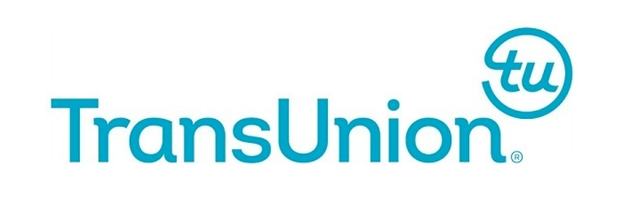
Experian South Africa: Experian is a global credit bureau established in 1980, operating in 36 countries, and is a leader in information solutions. Experian provides credit reports in an easy-to-read format for you to compare with other reports. Giving you an insight into your credit status. Experian South Africa provides vital credit-related services to both consumers and businesses. As one of the leading credit bureaus in the country, Experian plays a critical role in the financial landscape. It collects and maintains extensive credit information from various sources, including lenders, banks, and other financial institutions. Experian compiles this data to generate comprehensive credit reports and assign credit scores to individuals and entities, which are used by lenders to assess creditworthiness.

Compuscan: Compuscan, a notable credit agency established in 1994, is the first African credit bureau and is committed to being a total credit management solutions provider for emerging markets. Compuscan collects, verifies, houses, and distributes consumer credit information. Along with this, they provide products and services to help customers minimize risk and increase profits. Aiming to develop purpose-driven credit management and strengthen customer relationships.
As one of the major credit bureaus in the country, Compuscan specializes in collecting, managing, and analyzing credit information on individuals and businesses. It compiles comprehensive credit reports that provide detailed insights into an entity’s credit history, outstanding debts, payment patterns, and other pertinent financial data.
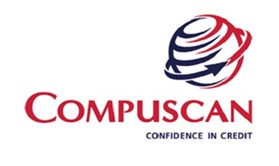
XDS (Xpert Decision Systems): XDS (Xpert Decision Systems) is a 100% independently black-owned credit bureau in South Africa. They provide innovative, user-focused information solutions that are specific to consumers’ needs. It holds a prominent position among the nation’s credit bureaus, specializing in the collection, management, and analysis of credit-related data for individuals and businesses. XDS compiles comprehensive credit reports that offer in-depth insights into an entity’s credit history, outstanding debts, payment behaviors, and other pertinent financial information.
Additionally, XDS assigns credit scores to individuals, simplifying the process of evaluating creditworthiness. With its significant role in promoting transparency and responsible lending practices, XDS contributes significantly to South Africa’s financial sector, ensuring fairness and accountability while empowering consumers to actively manage and enhance their financial reputations.

Types of Credit Cards in South Africa
Credit cards have become an integral part of South Africa’s financial landscape, offering consumers a convenient and flexible way to manage their finances. These cards, typically issued by banks and financial institutions, provide a revolving line of credit that allows cardholders to make purchases, pay bills, and access cash advances. One of the most common types of credit cards in South Africa is the traditional credit card, which comes with varying interest rates, credit limits, and fees. These cards often offer additional benefits such as rewards programs, cashback incentives, and purchase protection.
South Africa also features a diverse array of credit card options, including premium and platinum cards, which provide extra perks like travel insurance, airport lounge access, and exclusive discounts. Co-branded credit cards in partnership with retailers, airlines, or other organizations offer unique rewards and discounts when used with affiliated brands. Secured credit cards are available for individuals looking to build or rebuild their credit history, as they require a security deposit.
South Africa offers a diverse range of credit cards tailored to various financial needs and preferences. Some of the most common types include:
Standard Credit Cards: Standard credit cards are a ubiquitous and versatile financial tool in South Africa. These cards provide consumers with a revolving line of credit, allowing them to make purchases, pay bills, and access cash advances up to a predetermined credit limit. What distinguishes standard credit cards is the array of features and benefits they offer. This often includes rewards programs that earn cardholders’ points, cashback, or other incentives for each transaction. Travel benefits such as travel insurance and assistance services may also be included. Additionally, standard credit cards frequently come with purchase protection, covering items bought with the card in case of damage or theft.
Premium or Platinum Credit Cards: Premium or Platinum credit cards are considered the pinnacle of credit card offerings in South Africa. These cards are designed for high-income individuals who seek an elevated level of financial privileges and exclusive benefits. What sets premium cards apart are the premium perks they provide, such as access to airport lounges, dedicated concierge services for travel and entertainment, and higher credit limits. Cardholders often enjoy more generous rewards programs that may include cashback, premium travel rewards, and even luxury gifts or experiences. However, these premium benefits typically come with higher annual fees and more stringent eligibility criteria, including a higher minimum income requirement and an excellent credit history.
Co-branded Credit Cards: Co-branded credit cards in South Africa are financial products offered in partnership between credit card issuers and specific retailers, airlines, or organizations. These cards are designed to provide cardholders with unique benefits and rewards tailored to the affiliated brand. For example, a co-branded credit card with a popular retailer may offer discounts, loyalty points, or exclusive access to sales and events when used for purchases at that retailer. Similarly, co-branded airline credit cards often reward users with frequent flyer miles, priority boarding, or complimentary lounge access when flying with the partnering airline.
Secured Credit Cards: Secured credit cards are a valuable financial tool in South Africa, particularly for individuals looking to establish or rebuild their credit histories. These cards require cardholders to provide a security deposit upfront, usually equal to the card’s credit limit. This deposit serves as collateral, minimizing the risk for the card issuer. Secured credit cards offer numerous advantages, such as helping individuals with limited or damaged credit access credit opportunities they might otherwise be denied. By using the card responsibly and making on-time payments, cardholders can gradually improve their credit scores.
Business Credit Cards: Designed to meet the specific financial needs of businesses, these cards provide a flexible and efficient means of managing expenses and cash flow. They come equipped with features tailored to the corporate world, including expense tracking tools, detailed reporting, and the ability to issue employee cards with preset spending limits. Many business credit cards also offer specialized rewards programs, such as cashback on business purchases or travel-related perks like travel insurance and airport lounge access.
Student Credit Cards: Student credit cards are specially designed financial tools to cater to the unique needs of students in South Africa. These cards are an excellent way for young adults to start building their credit histories responsibly while managing their finances during their educational journey. Student credit cards typically come with lower credit limits and reduced eligibility criteria, making them accessible to individuals with limited income and credit history. They provide an opportunity for students to learn about responsible credit usage, as they often require careful budgeting and timely payments.
Charge Cards: Charge cards in South Africa are unique credit products that differ from traditional credit cards. These cards offer cardholders the convenience of making purchases and payments with a card, but they come with a key distinction: they require the full balance to be paid in full at the end of each billing cycle, usually within 30 days.
Fuel Credit Cards: Fuel credit cards in South Africa cater specifically to individuals who frequently purchase fuel for their vehicles. These cards offer a range of benefits and rewards tailored to drivers’ needs. One of the primary advantages is that they often provide cashback, discounts, or loyalty points specifically for fuel purchases, making them a cost-effective choice for those who spend a significant portion of their budget on fuel. Additionally, fuel credit cards may offer additional perks such as discounts on vehicle maintenance, car rentals, or even road assistance services.
Travel Credit Cards: Travel credit cards in South Africa are tailored to meet the unique needs of travelers, offering a range of benefits and rewards designed to enhance the travel experience. These cards typically come with features such as travel insurance coverage, airport lounge access, and priority boarding. Cardholders often earn travel-specific rewards, such as airline miles or hotel points, for every purchase made with the card. These rewards can be redeemed for flights, hotel stays, car rentals, and other travel-related expenses, helping travelers save on their adventures.
Low-Interest Credit Cards: Low-interest credit cards in South Africa are designed to offer cardholders a more cost-effective way to manage their credit card debt. These cards come with a lower annual percentage rate (APR) on outstanding balances compared to standard credit cards, making them an attractive option for those who tend to carry a balance from month to month.
Balance Transfer Credit Cards: Balance transfer credit cards in South Africa are a valuable financial tool for individuals looking to manage and reduce their existing credit card debt. These cards offer the option to transfer the balance from one or more high-interest credit cards to the new balance transfer card, typically at a significantly lower or even 0% interest rate for a promotional period, which can last from several months to over a year. By consolidating their debt onto a balance transfer card, cardholders can save on interest charges and pay down their debt more efficiently.
Sources of Credit Cards in South Africa
Credit cards in South Africa are typically sourced through various financial institutions, including banks and credit card companies. These institutions offer a range of credit card products to cater to the diverse financial needs of consumers. Banks like Standard Bank, Absa, Nedbank, and First National Bank (FNB) are major players in the South African credit card market, each providing a variety of credit card options with varying features, benefits, and terms.
Additionally, international credit card companies like Visa, Mastercard, and American Express have a significant presence in South Africa and collaborate with local banks to issue credit cards under their brands. Consumers can also apply for credit cards online through the websites of these institutions or visit their local branches to inquire about the best credit card options that suit their specific financial requirements and credit profiles.
Commercial Banks: Commercial banks are among the primary and most common sources of credit cards in South Africa. Major banks like Standard Bank, Absa, Nedbank, and First National Bank (FNB) offer a wide range of credit card options to their customers. These banks have a substantial presence across the country, making it convenient for individuals to apply for credit cards. Customers can visit local branches or apply online through the bank’s website to access credit cards with various features, benefits, and terms.
Standard Bank is one of the leading sources of credit cards in South Africa, offering a diverse range of credit card options to meet the financial needs and preferences of its customers. As one of the country’s major commercial banks, Standard Bank provides a convenient and accessible platform for individuals to apply for credit cards. Customers can visit local branches, apply online through the bank’s website, or use its mobile app to explore the various credit card offerings.
Customers may select their Standard Bank credit card based on factors like interest rates, credit limits, annual fees, rewards, and additional benefits. The bank’s commitment to innovation and customer service has made it a trusted and popular source for obtaining credit cards in South Africa, contributing to its strong presence in the country’s financial landscape.
Absa Bank is a prominent and trusted source of credit cards in South Africa, offering a wide array of credit card options to meet the diverse needs of its customers. Absa Bank’s credit card portfolio includes standard credit cards, premium or platinum cards, and co-branded cards in partnership with various retailers and organizations. These cards often come with features such as rewards programs, cashback offers, and travel-related benefits. Absa Bank also collaborates with international credit card companies like Visa and Mastercard, ensuring that their credit cards are widely accepted both within South Africa and abroad.
Nedbank is a trusted and prominent source of credit cards in South Africa, providing a range of credit card options to cater to the diverse financial needs of its customers. Nedbank’s credit card portfolio encompasses standard credit cards, premium or platinum cards, and specialized cards designed for businesses and students. These cards come with varying features, benefits, and rewards programs.
FNB’s credit card portfolio includes standard credit cards, premium or platinum cards, and specialized cards tailored to businesses, students, and specific interests such as travel or fuel. These cards come with a variety of features, benefits, and rewards programs, making it easy for customers to find a card that aligns with their spending habits and lifestyle preferences.
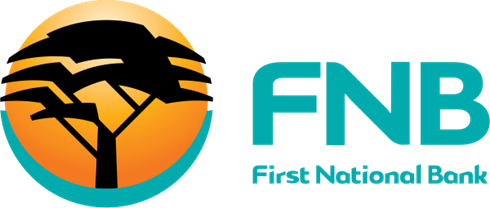
International Credit Card Companies: International credit card companies like Visa, Mastercard, and American Express are significant sources of credit cards in South Africa. These global card giants collaborate with local banks and financial institutions to issue credit cards bearing their brand names. This partnership provides South African consumers with access to credit cards that offer worldwide acceptance and access to international perks and rewards.
Credit cards issued by international companies in South Africa often come with a diverse range of features, benefits, and rewards programs, making them appealing options for a wide variety of consumers. These cards may include travel insurance, airport lounge access, cashback incentives, and bonus points that can be redeemed for travel, merchandise, or other rewards. South Africans who frequently travel internationally or make purchases from international vendors find these credit cards particularly useful. With the backing of renowned global credit card companies, these cards not only offer convenience but also a level of prestige and reliability.
Retailers: Retailers in South Africa often serve as sources of credit cards, offering co-branded credit card products in partnership with banks or financial institutions. These retail-affiliated credit cards are designed to reward loyal customers with exclusive benefits and incentives when making purchases within the retailer’s ecosystem. Retailers such as Woolworths, Pick n Pay, and various other stores have established co-branded credit card programs.
Co-branded retail credit cards typically offer discounts, loyalty points, or cashback rewards when used for transactions within the affiliated retailer. This encourages customer loyalty and frequent shopping at the retailer, often translating into cost savings and extra perks for cardholders. These credit cards are accessible to customers through in-store applications or online platforms, and approval is often relatively straightforward.

Credit Unions: Credit unions are emerging as alternative sources of credit cards in South Africa, offering a community-focused and member-driven approach to financial services. While credit unions primarily provide savings and loans to their members, some have started offering credit card products to meet the evolving needs of their communities. Credit union credit cards typically come with competitive interest rates and lower fees compared to traditional banks, making them an appealing choice for cost-conscious consumers.
While not as widespread as traditional banks, credit unions offer credit cards as a valuable financial tool for their members. These credit cards provide an opportunity for individuals to access credit while enjoying the benefits of belonging to a cooperative and locally focused financial institution. For South Africans who prefer a more community-driven approach to banking and value a close relationship with their financial provider, credit unions offer a unique source of credit card products.
Specialized Credit Card Companies: Specialized credit card companies have carved out a niche in the South African financial market, offering unique credit card products tailored to specific interests or needs. These companies often focus on providing credit cards with specialized benefits, rewards, or features. For example, they may specialize in travel rewards, fuel discounts, or even credit cards designed for students or individuals with specific hobbies or preferences.
South Africans who have specific financial goals or lifestyles often find specialized credit card companies to be valuable sources of credit cards. These cards may offer benefits such as cashback on specific purchases, exclusive discounts, or unique rewards that align with the cardholder’s interests. The variety of specialized credit card options allows consumers to choose a card that best suits their individual preferences and financial habits.
Types of Loans in South Africa
In South Africa, a diverse array of loan options is available to cater to the financial needs of its citizens. Firstly, there are personal loans, which are unsecured and can be used for various purposes such as home improvements, debt consolidation, or unexpected expenses. Mortgage loans are prevalent, enabling individuals to purchase homes through long-term repayment plans. For entrepreneurs, business loans offer the necessary capital to start or expand their enterprises.
Vehicle loans are popular for acquiring cars, with options for both new and used vehicles. Students can access education loans to fund their studies, while payday loans provide quick but short-term financial relief. South Africa also offers agricultural loans to support farmers and stimulate the agricultural sector. Each type of loan carries its terms and conditions, interest rates, and eligibility criteria, ensuring that South Africans have access to a range of financial solutions to meet their specific needs.
Personal Loan: In South Africa, a personal loan is a widely sought-after financial tool that offers individuals the flexibility to address a range of financial needs. Personal loans are typically unsecured, meaning they don’t require collateral, and can be used for various purposes, such as consolidating debt, covering medical expenses, financing a vacation, or making home improvements. Lenders in South Africa offer personal loans with fixed or variable interest rates, and the repayment terms vary, often ranging from one to five years.
The eligibility criteria for personal loans typically include a stable source of income and a good credit history, although some lenders also cater to individuals with less-than-perfect credit scores. These loans provide South Africans with a convenient way to access funds when needed, allowing them to manage their finances and pursue their goals effectively.
Home Loans: These loans are a common means of financing the purchase of homes, whether it’s a first-time buyer looking for a starter home or an experienced homeowner seeking to upgrade. South African banks and financial institutions offer home loans with various terms, interest rates, and repayment options to suit different needs and financial situations. Typically, home loans come with long repayment periods, often spanning several decades, which can make homeownership more accessible by spreading the cost over time. However, securing a home loan involves a thorough credit assessment, and the property itself often serves as collateral for the loan.
Pension-Backed Housing Loans: Pension-Backed Housing Loans have emerged as an innovative financial instrument in South Africa, addressing the critical issue of housing affordability. This unique approach leverages individuals’ retirement savings, typically invested in pension funds, to secure home loans. South Africa, with its vast economic disparities, has seen this concept gain momentum as a means to bridge the housing gap. By allowing prospective homeowners to utilize a portion of their pension contributions as collateral, these loans not only make property ownership more attainable but also provide a secure and structured way to access housing finance.
Vehicle Loans: Vehicle loans in South Africa play a crucial role in enabling individuals to purchase cars, motorcycles, and other modes of personal transportation. These loans are typically offered by banks, credit unions, and various financial institutions, providing a convenient means for South Africans to acquire vehicles without the burden of paying the full purchase price upfront. These loans come in various forms, including installment loans and balloon payment agreements, allowing borrowers to choose a repayment structure that aligns with their financial circumstances.
Student Loans: Student loans in South Africa play a pivotal role in facilitating access to higher education for many aspiring students. These loans are typically offered by government agencies such as the National Student Financial Aid Scheme (NSFAS) and some private financial institutions. They help cover tuition fees, accommodation, textbooks, and other educational expenses, easing the financial burden on students and their families. The terms and conditions of these loans often include favorable repayment terms, where repayments are income-contingent and only commence once the borrower reaches a certain income threshold.
Payday Loans: Payday loans in South Africa, like in many other countries, provide quick, short-term financial relief to individuals facing immediate cash flow challenges. These loans are typically small, unsecured, and come with high-interest rates and fees. Borrowers often use payday loans to cover unexpected expenses or bridge financial gaps between paychecks. While payday loans offer convenience and accessibility, they have drawn criticism for their exorbitant interest rates, which can trap borrowers in a cycle of debt if not managed carefully.
Agricultural Loans: With a diverse range of climates and landscapes, South Africa boasts a thriving agricultural industry that contributes significantly to the country’s economy and food security. These loans are typically offered by financial institutions, government agencies, and agricultural cooperatives to assist farmers in various aspects of their operations. Farmers can access funds for purchasing land, acquiring modern equipment, investing in irrigation systems, and managing working capital.
Consolidation Loans: These loans are designed to help borrowers who may be juggling multiple debts, such as credit cards, personal loans, and store accounts, by combining them into a single, more manageable loan. By consolidating their debts, South Africans can often benefit from lower interest rates, extended repayment terms, and the convenience of dealing with only one creditor. This approach not only simplifies financial management but can also lead to significant cost savings over time.
Development Loans: These loans are typically extended by international financial institutions, bilateral partners, or domestic lenders to support projects and initiatives aimed at infrastructure development, poverty reduction, education, healthcare, and other critical sectors. South Africa’s history of apartheid and subsequent socio-economic disparities have made development loans essential for closing the gap between different communities and regions.
Green Loans: These loans are designed to support projects and businesses that prioritize environmental conservation and reduce their carbon footprint. South Africa, with its growing awareness of climate change and the need for sustainable development, has witnessed a surge in demand for green financing options. These loans typically offer favorable terms and lower interest rates to incentivize investments in renewable energy, energy-efficient technologies, eco-friendly infrastructure, and other environmentally responsible projects.
South Africa Education System
- Overview of South Africa’s Education System
- Structure of South Africa’s School System
- Types of Schools
- Enrollment in School
Overview of South Africa’s Education System:
South Africa’s education system is a complex and diverse landscape that has undergone significant transformations since the end of apartheid in 1994. The country places a strong emphasis on education as a means to address historical inequalities and foster social and economic development. The system is divided into several phases, including early childhood education, primary schooling, secondary education, and tertiary education.
The government has made efforts to improve access to education, with a focus on redressing past imbalances, but challenges such as inadequate infrastructure, teacher shortages, and socioeconomic disparities persist. Furthermore, the country is striving to align its education system with global standards, emphasizing skills development and innovation to prepare students for the demands of the 21st century.
Department of Basic Education: The mandate of the Department of Basic Education (DBE) is to monitor the standards of the provision, delivery, and performance of education annually or at other specified intervals throughout South Africa, to assess compliance with the provisions of the Constitution of the Republic of South Africa of 1996 and with national education policy.
The department derives its mandate from the National Education Policy Act of 1996, which inscribes into law the policies, legislative and monitoring responsibilities of the Minister of Basic Education, and the formal relations between national and provincial authorities.
South African Schools Act of 1996, which promotes access to education, promotes quality and democratic governance in the schooling system and makes schooling compulsory for children aged seven to 15 to ensure that all learners have access to quality education without discrimination. Employment of Educators Act of 1998, which regulates the professional, moral, and ethical responsibilities of educators, and competency requirements for teachers.
The department is committed to improving the physical infrastructure and environment at every public school in the basic education sector. Apart from accelerating the construction, maintenance, upgrading, and rehabilitation of new and existing infrastructure, the department planned to provide schools with water and sanitation and to replace schools constructed with inappropriate materials such as mud.

Structure of South Africa’s School System
In South Africa school education encompasses primary and secondary education. Primary education lasts for 6 years and is split up into 3 phases Foundation, Intermediate, and Senior phase. After completion of the primary education, students are awarded the General Education and Training Certificate. After completing secondary education, students are awarded a Senior Certificate. In South Africa, compulsory education is 9 years, starting at the age of 7 and going on till the age of 15, followed by non-compulsory further education and training (FET).
The higher education system comprises of Traditional Universities, Universities of Technology, and comprehensive Universities. The Higher Education Institutions in South Africa provide Bachelor, Honors, Master and Doctorate Degrees, Undergraduate and Postgraduate Diplomas and Certificates. Coursework is arranged in modules, with pupils registering in a unit/credit system.

Pre-Primary Education: Pre-primary education in South Africa is a vital component of the country’s educational system, aiming to provide a strong foundation for young learners before they enter formal primary school. This phase typically caters to children between the ages of 0 to 5 years old. While not compulsory, pre-primary education is widely recognized as an important step in preparing children for primary school and fostering their cognitive, social, and emotional development.
Most of the pre-primary schools in South Africa are subjugated by the private sector. Early childhood development centers (ECDs), including preschools and crèches, play a significant role in delivering pre-primary education. However, access to quality pre-primary education is not evenly distributed, with disparities existing between urban and rural areas and among different socio-economic groups. The government has recognized the importance of expanding access to early childhood education and is working to improve the quality and availability of pre-primary programs as part of its broader efforts to enhance the overall education system in South Africa.

General Education and Training (GET): The General Education and Training comprises Grades 0-9 and is compulsory to attend. General Education and Training (GET) in South Africa forms a crucial part of the country’s education system, encompassing the foundational years of formal education. GET consists of three phases: Foundation, Intermediate, and Senior Phase.
During the GET phase, learners are exposed to a broad curriculum that includes subjects like mathematics, languages, sciences, and social studies. The aim is to provide students with a well-rounded education and the foundational knowledge and skills necessary for further learning and personal development. The GET phase also emphasizes the acquisition of key competencies and values, such as critical thinking, problem-solving, and social responsibility.
Foundation Phase: Junior Primary Schools offer foundation phase education and is compulsory. Pupils learn to read, write, and calculate in their language and begin to learn another.
- Age: 6 – 9 Years.
- Grade: Grade 0 or ‘Reception’ to Grade 3.
Intermediate Phase: Senior Primary Schools teach intermediate-phase education. Pupils learn to develop their practical skills and deepen the knowledge gained at the foundation phase. They also start learning History, Geography, and General Science.
- Age: 9 – 12 years
- Grades: 4 – 6
Senior Phase: Secondary Schools operate at this phase. The focus shifts to art, mathematics, technology, languages, natural and social sciences, At the end of this phase, students get hold of the ‘General Education and Training Certificate’.
- Age: 12 – 15 years
- Grades: 7 – 9

Further Education and Training (FET): Further Education and Training (FET) in South Africa constitutes the senior phase of the country’s formal education system, encompassing Grades 10 to 12. This crucial stage allows learners to deepen their knowledge and skills in specific subject areas and prepare for the transition to higher education or the job market. During the FET phase, students have the opportunity to choose elective subjects tailored to their interests and career aspirations.
The National Senior Certificate (NSC) examination, commonly known as Matric, marks the culmination of the FET phase and is a key qualification for university admission and employment. South Africa’s education system places significant emphasis on this phase, as it serves as a gateway to higher education and future career prospects.
- School Type: Senior Secondary Schools
- Duration: 3
- Age: 15-18
- Grades: 10-12
- Credential Awarded: Senior Certificate
- National Qualification Framework: Level 2-4
Students must take a public exam in a minimum of six subjects to get hold of a Senior Certificate.
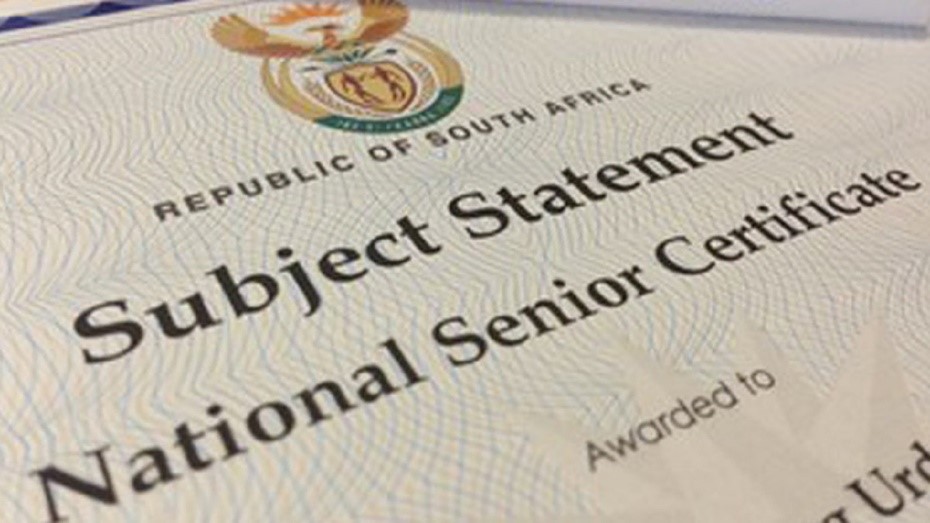
Higher Education and Training: Higher Education and Training in South Africa comprises a diverse and dynamic sector, offering a wide range of academic and vocational programs. The country boasts several world-class universities and technical colleges that provide opportunities for learners to pursue undergraduate, postgraduate, and professional qualifications.
The higher education sector has also made efforts to promote inclusivity by expanding access to historically disadvantaged communities through various financial aid and support programs. Despite these positive aspects, the sector faces challenges, including funding constraints, infrastructure limitations, and ongoing debates about the transformation of higher education to address historical inequalities.
- Age: 18-21
- National Qualification Framework: Level 5-8
- Credentials: bachelor’s degree, Honors Degree, master’s degree, Doctorate Degree, Diploma, and Certificates (Depending upon the Program)
Universities offer 3-year long bachelor’s degrees in addition to other longer courses for vocational training, and master and doctorate programs. Programs at Technikons diverge from 1-4 years and are more professional than those at universities. Both entail Senior Certificates, but higher educational achievement is compulsory for university admission.
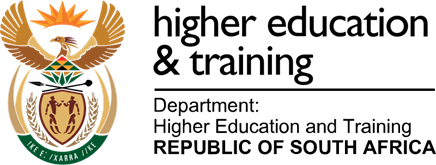
Types of Schools
South Africa features a diverse array of school types, catering to the unique educational needs and preferences of its population. Public schools are the most common and receive government funding. These schools can vary widely in terms of resources and quality, with some providing excellent education while others face resource challenges.
Private schools, on the other hand, are funded by tuition fees and offer more specialized and often higher-quality education, but they cater to a smaller portion of the population due to their cost.
Furthermore, there are specialized schools such as technical and vocational schools that focus on practical skills training.
In addition, South Africa has a growing number of independent or community-based schools, which may offer alternative educational approaches. The country also emphasizes inclusive education, with schools dedicated to learners with disabilities. Overall, the diversity of school types in South Africa reflects the nation’s commitment to providing various educational options to meet the diverse needs of its population.
The most popular types of schools in South Africa are as follows:
Public Schools (Government Schools): Government schools in South Africa form the largest segment of the country’s education system. These schools are funded by the government and aim to provide free basic education to all South African children, regardless of their socio-economic background. Government schools are diverse and can vary significantly in terms of resources, infrastructure, and quality of education.
While some government schools offer excellent facilities and educational opportunities, others face challenges such as overcrowded classrooms, inadequate infrastructure, and shortages of qualified teachers. The government is continuously working to address these disparities and improve the overall quality of education in public schools.
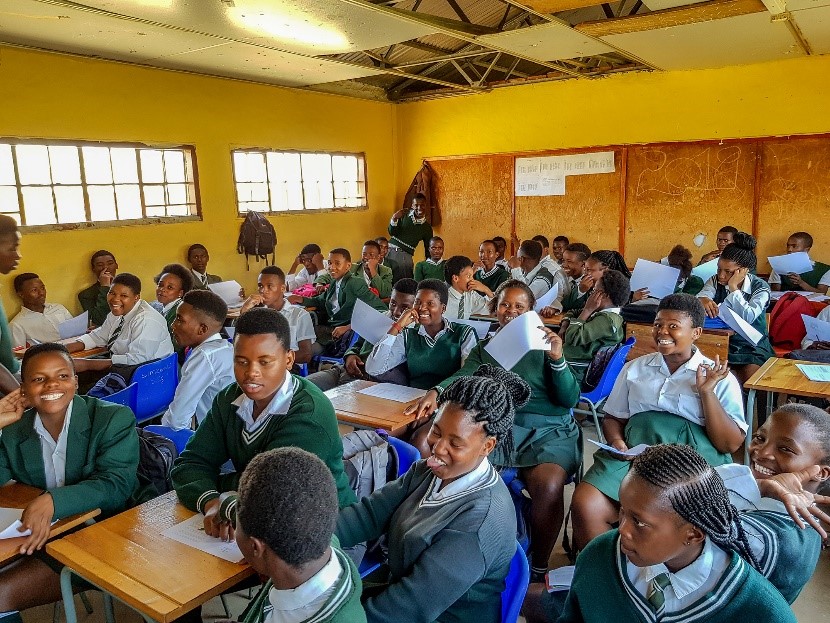
Private Schools: These schools are privately owned and operated, relying on tuition fees and sometimes additional funding sources to provide education services. Private schools often offer a more specialized and sometimes higher-quality education compared to their public counterparts, with smaller class sizes, modern facilities, and a broader range of extracurricular activities. They also have the flexibility to develop unique curricula and teaching approaches. However, private education comes at a cost, making it accessible to a smaller portion of the population.
The most famous top private schools in South Africa are:
- St Mary’s DSG
- Roedean School for Girls
- Diocesan School for Girls
- St Cyprian’s
- St Mary’s Waverly
- Bishops
- Somerset College
- The Wykeham Collegiate
- St John’s College
- Michaelhouse
Alternative Learning Schools: These schools offer innovative and flexible approaches to education, often tailored to individual student requirements. They cater to a wide range of learners, including those who struggle with mainstream education, have specific learning challenges, or seek non-traditional learning environments. Alternative schools may focus on experiential learning, smaller class sizes, or unique curricular approaches. Some alternative schools also specialize in specific subjects or fields, such as the arts or technology. The famous Alternative Learning Schools are:
International Schools: These schools typically follow international education frameworks such as the International Baccalaureate (IB) or the Cambridge International curriculum, providing a high standard of education that is recognized worldwide. They often emphasize multiculturalism and a global perspective, attracting students from diverse backgrounds. International schools typically have modern facilities, small class sizes, and highly qualified international teaching staff. The most common international schools are:
- American International School of Cape Town
- Bishops Diocesan College
- German International School
- Cape Town French School
Home Schooling: Homeschooling in South Africa is a legal and viable alternative to traditional schooling. It allows parents or guardians to take full responsibility for their children’s education by designing and delivering a curriculum at home. Homeschooling families in South Africa have the flexibility to tailor education to their child’s individual needs, pace, and learning style.
However, homeschooling in South Africa is subject to certain regulations, including registration with the Department of Basic Education, regular assessments, and adherence to the national curriculum standards. Homeschooling can be a beneficial choice for families seeking more personalized education, have specific concerns about traditional school environments, or have unique educational goals.

Enrollment in School
Enrollment in schools in South Africa is a critical step in the educational journey of its youth. The country has made significant progress in expanding access to education, with a focus on achieving universal enrollment. The South African Schools Act of 1996 mandates that all children between the ages of 7 and 15 must attend school, which includes both primary and secondary education phases. However, enrollment rates can vary across different regions and communities, with disparities often linked to socioeconomic factors.
In some areas, overcrowding and limited resources can pose challenges to the quality of education and the overall learning experience. Nonetheless, the government has implemented various policies and programs to address these issues and ensure that more children have the opportunity to access quality education. Efforts to improve enrollment rates and educational outcomes remain central to South Africa’s commitment to addressing historical inequalities and promoting social and economic development.
Enrollment in schools in South Africa occurs in various stages, reflecting the country’s diverse education system:
Pre-Primary Education: Pre-primary education, also known as early childhood education (ECD), typically caters to children between the ages of three and six. While it is not compulsory, many parents choose to enroll their children in pre-primary education centers, such as preschools, nurseries, and crèches.
Enrollment in pre-primary education has several key objectives in South Africa:
School Readiness: Pre-primary education aims to prepare children for formal primary schooling by introducing them to basic literacy, numeracy, and social skills.
Holistic Development: ECD centers focus on the holistic development of children, encompassing cognitive, physical, emotional, and social aspects of learning.
Language and Communication: These centers help children develop language and communication skills, which are crucial for future academic success.
Play-Based Learning: Pre-primary education in South Africa often employs play-based learning approaches to engage children and make learning enjoyable.
Inclusivity: Efforts are made to ensure inclusivity by accommodating children with disabilities and providing a supportive learning environment for all.
General Education and Training (GET): The GET phase includes Grades 1 to 9 and is a crucial stage in preparing learners for further education and personal development. Enrollment in GET is subject to compulsory attendance, with children between the ages of seven and fifteen required to attend school.
Some major points to be considered in (GET) education are:
Universal Access: South Africa is committed to achieving universal access to GET education, ensuring that all children have the opportunity to attend school during these crucial years.
Holistic Curriculum: GET education provides a broad-based curriculum that covers various subjects, including mathematics, languages, sciences, and social studies. It aims to impart foundational knowledge and skills.
Equity: The government strives to address historical inequalities in education by improving access to quality GET education in disadvantaged communities and rural areas.
Emphasis on Literacy and Numeracy: GET education places significant emphasis on improving literacy and numeracy skills, as these are fundamental to later academic success.
Inclusive Education: South Africa is committed to inclusive education, ensuring that learners with disabilities have access to GET education and receive the necessary support.
Further Education and Training (FET): This stage is designed to prepare students for higher education, vocational training, or entry into the job market. Enrollment in FET education is a significant milestone, as successful completion of this phase culminates in the National Senior Certificate (NSC) examination, often referred to as “Matric.” These institutions not only empower individuals with practical skills but also contribute to the nation’s economic growth and social development by producing a skilled and adaptable workforce. As South Africa continues to invest in the expansion and improvement of its FET education system, it remains a vital component in the nation’s pursuit of a more prosperous and equitable future.
Higher Education and Training: Enrollment in Higher Education and Training (HET) in South Africa reflects the nation’s commitment to expanding educational opportunities and fostering human capital development. South African universities and colleges have seen a significant increase in enrollment over the years, driven by a growing emphasis on post-secondary education and skills development. Various government initiatives, such as the National Student Financial Aid Scheme (NSFAS), aim to alleviate financial barriers and promote equitable access to higher education, especially among previously disadvantaged communities.
This proactive approach strives to ensure that all South Africans have a fair chance to pursue tertiary education, regardless of their socio-economic background. The diversity of programs offered, from traditional academic disciplines to vocational and technical courses, further underscores the inclusive nature of higher education in South Africa. As enrollment continues to rise, HET institutions play a pivotal role in shaping the nation’s future by equipping students with the knowledge and skills needed to contribute to a more prosperous and equitable society.
South Africa’s Health Care System
- Overview of South Africa Health Care System
- Department of Health (DoH)
- National Health Insurance (NHI)
- Health Care Providers in South Africa
- Components of South Africa’s Health Insurance
- Understanding Your Health Insurance
- Types of Health Insurance
- Health Care Regulation
Overview of South Africa Health Care System
South Africa’s healthcare system is a complex and multifaceted entity that faces a range of challenges and disparities. The system comprises both a public and private sector, with the public sector primarily serving the majority of the population who rely on government-funded healthcare services. One of the most significant challenges is the stark divide between the quality of care provided in the public and private sectors. While the private sector offers world-class healthcare facilities and services, the public sector often grapples with issues such as underfunding, staff shortages, and inadequate infrastructure, leading to disparities in access and outcomes.
Healthcare in South Africa is administered by the Department of Health (DoH). However, South Africa does not have a system of universal healthcare. Instead, it has two parallel systems. A private healthcare system and a public healthcare system operate in tandem with one another. The majority of the public, up to 80% of the population, relies on the public system for their care. The public system is subsidized by the government. In general, it is underfunded and poorly managed. There are more than 400 public hospitals in South Africa. Large, regional hospitals are managed by provincial health departments. Smaller hospitals and primary care clinics are managed at the municipal level.
On the other side, an estimated 80% of doctors work in the private system, serving just 20% or so of the population, primarily middle-class and upper-class families, as well as ex-pats. As such, the public system is constantly short of resources, while the private system is very strong.
Department of Health (DoH)
The Department of Health (DoH) in South Africa is a critical government agency responsible for overseeing and regulating the country’s healthcare system. Under the guidance of the Minister of Health, the DoH plays a pivotal role in formulating health policies, implementing healthcare programs, and monitoring the delivery of healthcare services. Its mandate encompasses a wide range of responsibilities, from managing public healthcare facilities and promoting public health initiatives to regulating healthcare professionals and pharmaceutical products.
The Department of Health (DoH) derives its mandate from the National Health Act of 2003, which requires that the department provides a framework for a structured and uniform health system for South Africa. The Act sets out the responsibilities of the three levels of government in the provision of health services. Its mission is to improve health by preventing illness and disease and promoting healthy lifestyles. It aims to consistently improve the healthcare delivery system by focusing on access, equity, efficiency, quality, and sustainability.
Over the medium term, the department aimed to focus on reducing morbidity and mortality resulting from the Coronavirus Disease (COVID‐19) pandemic, including rolling out the government’s vaccination strategy and responding to future waves of infection. Ongoing focus areas include implementing National Health Insurance (NHI), preventing and treating communicable and non‐communicable diseases, investing in health infrastructure, supporting tertiary healthcare services in provinces, and developing the health workforce.
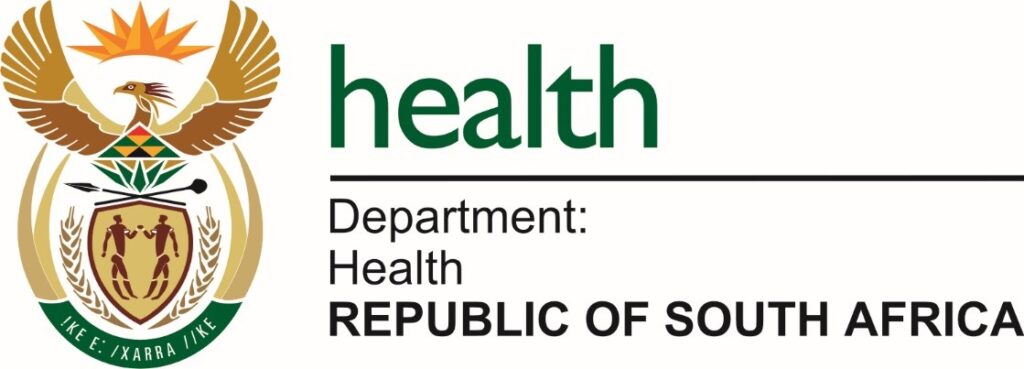
National Health Insurance (NHI)
The National Health Insurance (NHI) in South Africa is a transformative healthcare initiative aimed at achieving universal healthcare coverage for all citizens. Spearheaded by the South African government, the NHI seeks to address the existing disparities in healthcare access and quality by establishing a single-payer system that provides comprehensive health services to everyone, regardless of their socioeconomic status. The NHI aims to pool funds from various sources, including taxes, to create a unified and equitable healthcare system.
By reducing the reliance on private healthcare and ensuring that all South Africans have access to essential healthcare services, the NHI seeks to improve health outcomes, reduce financial barriers, and promote health equity. While the NHI holds great promise for the country, its implementation is a complex and long-term endeavor, requiring significant investment and policy reforms to build a sustainable and inclusive healthcare system for all South Africans.
The National Health Insurance (NHI) is a health financing system that is designed to pool funds to provide access to quality affordable personal health services for all South Africans based on their health needs, irrespective of their socio-economic status. NHI is intended to ensure that the use of health services does not result in financial hardship for individuals and their families.
NHI seeks to realize universal health coverage for all South Africans. This means that every South African will have a right to access comprehensive healthcare services free of charge at the point of use at accredited health facilities such as clinics, hospitals, and private health practitioners. This will be done using an NHI card. The services will be delivered closest to where people live or work.
NHI is being implemented in phases over a 14-year period that started in 2012. It will be established through the creation of a single fund that will buy services on behalf of the entire population, The funding for NHI will be through a combination of various mandatory pre-payment sources, primarily based on general taxes.
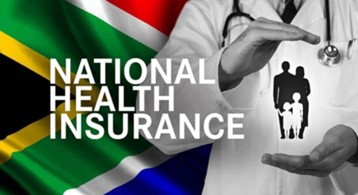
Health Care Providers in South Africa
Healthcare providers in South Africa encompass a wide range of professionals and institutions dedicated to delivering medical care and services to the nation’s population. These providers include doctors, nurses, pharmacists, dentists, and various allied health professionals, all of whom play vital roles in diagnosing, treating, and preventing illnesses. In South Africa, healthcare services are offered through both the public and private sectors. The public sector caters to the majority of the population and is funded by the government, providing essential healthcare services to those who cannot afford private care.
The private sector, on the other hand, offers more specialized and often higher-quality healthcare services, catering to those who can afford it through private health insurance or out-of-pocket payments. Both sectors are essential components of the healthcare landscape in South Africa, aiming to ensure that citizens have access to the medical care they need, albeit with varying levels of affordability and quality.
South Africa has a variety of healthcare providers, both in the public and private sectors. Here are some prominent healthcare companies and organizations in the country:
National Health Laboratory Service (NHLS): The National Health Laboratory Service (NHLS) contributes significantly to the country’s healthcare infrastructure. Established as a public entity, the NHLS plays a pivotal role in the diagnosis and monitoring of diseases, enhancing the quality of patient care. It operates a vast network of laboratories throughout the nation, providing essential diagnostic services to both public and private healthcare facilities. The NHLS is responsible for conducting a wide range of tests, including blood tests, pathology, microbiology, and virology, aiding in the identification and management of various health conditions.
Moreover, the NHLS contributes to epidemiological research and public health surveillance, particularly in the context of infectious diseases like HIV/AIDS, and tuberculosis, and emerging threats like the COVID-19 pandemic.

Emergency Medical Services (EMS): Emergency Medical Services (EMS) offers lifesaving assistance during medical emergencies. Operating in both urban and rural areas, EMS teams consist of highly trained paramedics and emergency medical technicians who respond swiftly to accidents, injuries, and medical crises. Their prompt intervention and specialized care can make the difference between life and death.
EMS services in South Africa not only provide on-site emergency treatment but also offer rapid transportation to appropriate medical facilities, ensuring patients receive timely and appropriate care. These services are an essential link in the healthcare chain, working in close collaboration with hospitals and clinics to provide a seamless continuum of care. In a country with diverse healthcare challenges and geographic disparities, EMS providers play a critical role in ensuring equitable access to emergency medical care, exemplifying their commitment to saving lives and improving healthcare outcomes.
South African National Blood Service (SANBS): The South African National Blood Service (SANBS) is dedicated to the collection, testing, processing, and distribution of blood and blood products. With the mission to ensure a stable and safe blood supply for the country’s healthcare system, SANBS plays an indispensable role in saving lives. Through a network of blood donation centers and mobile blood drives, SANBS collects blood from voluntary donors, carefully screens it for safety, and then delivers it to healthcare facilities across the nation. This service is instrumental in various medical procedures, from surgeries and trauma care to treating patients with chronic illnesses. SANBS’s commitment to maintaining a robust blood supply and stringent quality control measures contributes significantly to the healthcare infrastructure of South Africa, making a profound impact on patient outcomes and promoting public health.
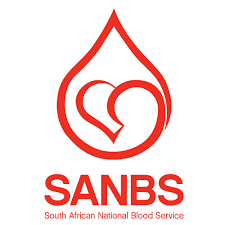
National Institute for Communicable Diseases (NICD): The National Institute for Communicable Diseases (NICD) stands as a crucial healthcare service provider in South Africa, specializing in the field of infectious diseases. Operating under the National Health Laboratory Service (NHLS), the NICD plays a pivotal role in the surveillance, prevention, and control of communicable diseases. It provides comprehensive epidemiological research, diagnostic testing, and public health guidance, thereby aiding in the management of disease outbreaks and the protection of public health.
The NICD’s expertise extends to a wide range of infectious diseases, including HIV/AIDS, tuberculosis, influenza, and emerging threats such as the COVID-19 pandemic. Through its research, training programs, and collaborative efforts with healthcare agencies, the NICD contributes significantly to South Africa’s ability to respond effectively to infectious disease challenges, ultimately safeguarding the well-being of the nation’s citizens.

Components of South Africa’s Health Insurance
South Africa’s health insurance system comprises several key components designed to provide individuals and families with access to healthcare services. These components include medical schemes (health insurance plans), hospital cash plans, and gap cover insurance. Medical schemes are a primary form of health insurance, offering various benefit options to cover medical expenses, hospital stays, and prescribed medication. Hospital cash plans provide cash benefits to policyholders during hospitalization to help cover additional costs not covered by medical schemes, such as transportation and daily expenses.
Gap cover insurance addresses the shortfall between what medical schemes cover and the actual healthcare costs incurred by policyholders, ensuring that they are not burdened with unexpected expenses. These components work together to enhance access to healthcare services and provide financial protection for South Africans seeking quality medical care while managing the costs associated with healthcare.
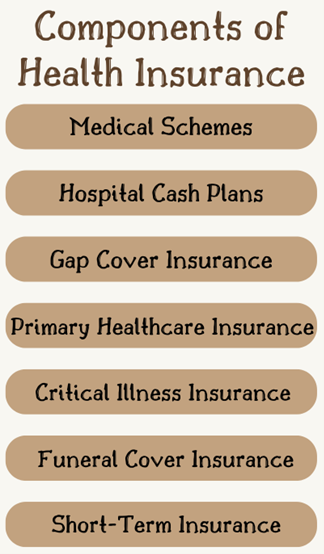
In South Africa, the healthcare financing and insurance system consists of several key components:
Medical Schemes: Serving as the primary means through which individuals and families access comprehensive healthcare coverage. These schemes operate on the principle of collective risk-sharing, where members pay monthly contributions to a fund that covers various healthcare services, including doctor’s visits, hospitalization, prescription medications, and other medical expenses.
Medical schemes offer a range of benefit options tailored to meet the diverse needs of policyholders, allowing them to choose plans that align with their healthcare requirements and budget constraints. With a focus on promoting health and wellness, these schemes play a vital role in ensuring that South Africans have access to quality healthcare services while mitigating the financial burden associated with medical treatments.
Hospital Cash Plans: Hospital cash plans are a valuable component of health care insurance in South Africa, designed to provide individuals and families with financial support during hospitalization. These plans offer policyholders a daily cash benefit while they are admitted to the hospital, helping to cover various incidental costs associated with their stay, such as transportation, accommodation for family members, and additional out-of-pocket expenses that may not be fully covered by their medical scheme.
Hospital cash plans offer a safety net, ensuring that individuals do not face financial strain when dealing with unexpected hospitalization. While they do not provide comprehensive health coverage like medical schemes, these plans serve as a crucial supplement to bridge the financial gap, offering peace of mind and financial security during challenging times of illness or injury.
Gap Cover Insurance: Addressing the financial gap that may exist between what medical schemes cover and the actual healthcare costs incurred by policyholders. While medical schemes provide essential coverage, they often have limits and exclusions that can result in out-of-pocket expenses for policyholders.
Gap cover insurance steps in to alleviate this financial burden by covering the difference, ensuring that individuals and families are not left with unexpected healthcare bills. This type of insurance offers a crucial layer of protection, especially for those facing specialized treatments, surgical procedures, or high medical expenses.
Primary Healthcare Insurance: These insurance plans typically cover primary care needs, including general practitioner visits, preventive care, vaccinations, and basic medical services. Primary healthcare insurance aims to promote early intervention and disease prevention, encouraging individuals to seek medical attention when needed, rather than waiting for conditions to worsen. While it may not provide coverage for more specialized or hospital-based care, it plays a crucial role in ensuring that individuals have access to regular healthcare check-ups and timely medical advice.
Critical Illness Insurance: This insurance provides policyholders with a lump-sum payment upon the diagnosis of specific critical illnesses, such as cancer, heart disease, stroke, or organ failure. The funds received can be used to cover various expenses associated with the illness, including specialized medical treatments, medications, lifestyle adjustments, or even non-medical expenses like mortgage payments or childcare.
Funeral Cover Insurance: This type of insurance ensures that policyholders and their loved ones have assistance in covering the costs associated with funerals and burials, which can be a significant financial burden. Funeral cover policies typically offer a lump-sum payout to beneficiaries upon the policyholder’s death, helping to cover expenses such as funeral services, coffins, transportation, and related ceremonies. While not directly related to healthcare, funeral cover insurance serves a critical purpose in providing financial relief during an emotional and challenging period.
Short-Term Insurance: While not primarily focused on healthcare, short-term insurance policies can offer limited coverage for specific medical needs, accidents, or emergencies. These policies are typically designed to provide financial support for unforeseen events, such as accidents, injuries, or temporary illnesses. They may cover expenses like hospital stays, doctor’s visits, and prescribed medications, helping individuals manage unexpected healthcare costs.
Understanding Your Health Insurance
Healthcare insurance coverage in South Africa typically includes a range of essential medical services and treatments. This may encompass hospitalization, covering expenses related to room and board, surgeries, and specialized medical procedures. Outpatient care, including doctor’s visits, consultations with specialists, and prescribed medications, is also commonly covered.
Maternity benefits often include prenatal care, childbirth, and postnatal care for both mother and child. Emergency services, such as ambulance transportation and urgent care, are typically included, as are preventive care services like vaccinations and screenings. Some insurance plans extend coverage to dental and optical care, while others may cover mental health services, rehabilitation, and treatments for chronic conditions.
However, here are some common elements that are typically covered by public healthcare insurance (NHI) in South Africa:
Basic Healthcare Services: These services typically include access to general practitioners for check-ups and consultations, vaccinations to prevent common diseases, access to primary healthcare clinics for routine care and minor illnesses, and essential medications for common health conditions. Basic healthcare services are the cornerstone of public healthcare systems, focusing on early diagnosis, preventive measures, and timely treatment to maintain the health and well-being of individuals and communities.
Hospitalization: Public healthcare insurance typically covers the costs associated with hospital stays, ensuring that individuals have access to essential medical services, surgical procedures, and specialized treatments without facing significant financial burdens. This coverage includes expenses related to room and board, medical procedures, diagnostic tests, prescription medications, and the services of healthcare professionals.
Maternity Care: Public healthcare insurance typically covers a spectrum of services related to pregnancy and childbirth, including prenatal care to monitor the health of both the mother and baby, access to antenatal clinics for check-ups and screenings, assistance during labor and delivery, and postnatal care to ensure the well-being of the newborn and mother. This coverage extends to a range of medical procedures and tests, as well as essential medications.
Emergency Services: Public healthcare insurance typically covers the cost of emergency medical services, including ambulance transportation to healthcare facilities and emergency room care. This coverage is crucial for addressing accidents, injuries, sudden illnesses, and other critical situations where immediate medical attention is required. By including emergency services, public healthcare insurance programs aim to minimize delays in accessing care, reduce the financial burden associated with emergency treatments, and ultimately save lives.
Preventive Care: Preventive Care includes vaccinations, screenings, and routine health check-ups. These services are aimed at detecting and addressing health issues at an early stage, often before they become more severe and costly to treat. Preventive care also includes health education and awareness campaigns, promoting healthy lifestyles, and encouraging individuals to adopt behaviors that reduce the risk of chronic diseases.
Chronic Disease Management: Recognizing the significant burden posed by long-term health conditions such as diabetes, hypertension, and HIV/AIDS. Public healthcare insurance typically covers the comprehensive care and treatment required to manage chronic diseases effectively. This includes regular check-ups, monitoring of vital signs, medication provision, and access to specialized healthcare professionals.
Rehabilitation Services: These services typically include physical therapy, occupational therapy, speech therapy, and other specialized therapies designed to restore and enhance a person’s functional capacity and quality of life. Public healthcare insurance often covers the costs associated with rehabilitation services, ensuring that individuals receive the necessary care to regain independence and improve their overall well-being.
Geriatric Care: This includes access to specialized medical care, geriatric assessments, chronic disease management tailored to age-related conditions, and long-term care options when necessary. Geriatric care emphasizes maintaining the health and independence of older adults, preventing and managing age-related diseases and conditions, and improving their overall quality of life.
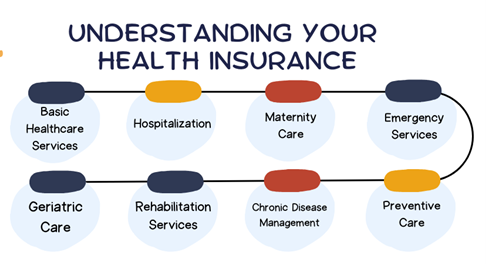
Types of Health Insurance
In South Africa, healthcare financing and insurance are divided into two main sectors: public and private:
Public Insurance: In South Africa, public health insurance primarily involves government-funded initiatives aimed at providing essential healthcare services and financial support to the population. While the National Health Insurance (NHI) program is the most significant and ongoing effort to achieve universal healthcare coverage. The NHI’s objective is to ensure equitable access to comprehensive healthcare services, funded through general taxation and contributions, ultimately covering all South Africans.
Additionally, public healthcare services are administered at the provincial level, offering a range of medical services, including hospital care, clinic services, and primary healthcare. Community health clinics and outreach programs play a vital role in providing basic healthcare services, especially in underserved rural areas. These public health insurance initiatives and services are designed to address the healthcare needs of vulnerable and low-income individuals and promote equitable access to healthcare across the nation.
Private Insurance: In South Africa, private health insurance options offer individuals and families a range of choices to access healthcare services outside of the public healthcare system. The primary type of private health insurance is Medical Schemes, also known as medical aids. Medical schemes provide various benefit options, allowing members to select coverage that aligns with their healthcare needs and budgets. These schemes cover a wide array of medical services, including doctor’s visits, hospitalization, prescribed medications, and specialized treatments.
In addition to Medical Schemes, there are supplementary private health insurance options, such as hospital cash plans and gap cover insurance. Hospital cash plans offer policyholders daily cash benefits during hospitalization, while gap-cover insurance helps bridge the financial gap between what medical schemes cover and the actual healthcare costs incurred. These private health insurance options provide individuals with additional choices for comprehensive healthcare coverage, quicker access to services, and greater control over their healthcare decisions.
Health Care Regulation
Healthcare regulation in South Africa is overseen by various governmental bodies and agencies to ensure the quality, safety, and accessibility of healthcare services in the country. The South African Department of Health (DoH) plays a central role in formulating healthcare policies, regulations, and standards. The Health Professions Council of South Africa (HPCSA) regulates healthcare professionals, such as doctors, nurses, and allied health practitioners, ensuring their competence and ethical conduct.
The South African Health Products Regulatory Authority (SAHPRA) oversees the registration, quality, and safety of medicines and medical devices. Additionally, the Council for Medical Schemes (CMS) regulates private health insurance and medical schemes to safeguard the interests of policyholders. The regulatory framework aims to balance the needs of public and private healthcare sectors, ensuring that healthcare services are accessible, affordable, and of high quality for all South Africans while upholding ethical standards and patient rights.
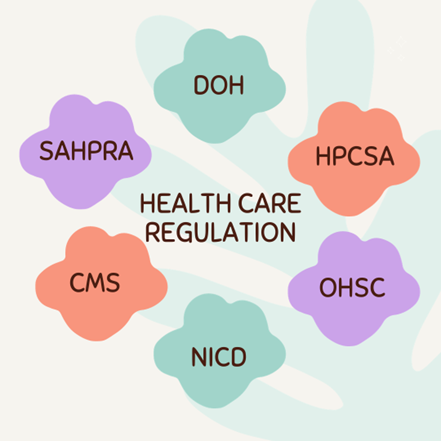
Department of Health (DoH): DoH plays a central role in shaping healthcare policies, standards, and regulations to ensure the effective delivery of healthcare services to the population. The DoH is instrumental in the ongoing development and implementation of the National Health Insurance (NHI) program, which aims to achieve universal healthcare coverage and equitable access to quality healthcare for all South Africans.
This regulatory body oversees various aspects of healthcare, including public health initiatives, disease control, healthcare infrastructure development, and the coordination of healthcare services across the country. It works collaboratively with other healthcare regulatory bodies to uphold ethical standards, patient rights, and safety while striving to improve the overall health and well-being of the South African population.
Health Professions Council of South Africa (HPCSA): HPCSA’s primary role is to oversee and regulate healthcare professionals, ensuring their competence, ethical conduct, and adherence to established standards of practice. The HPCSA covers a wide range of healthcare disciplines, including doctors, nurses, pharmacists, dentists, psychologists, and various allied health professionals.
By setting and upholding high standards of education, training, and professional behavior, the HPCSA plays a crucial role in safeguarding the quality and safety of healthcare services provided to the South African population. It also investigates complaints and concerns regarding healthcare professionals, taking disciplinary action when necessary to protect the public and maintain the integrity of the healthcare profession in South Africa.
South African Health Products Regulatory Authority (SAHPRA): SAHPRA is a critical healthcare regulatory agency responsible for overseeing and ensuring the safety, quality, and efficacy of medicines, vaccines, medical devices, and clinical trials in South Africa. SAHPRA plays a pivotal role in safeguarding public health by rigorously assessing and approving healthcare products before they reach the market.
This includes evaluating applications for product registration, conducting inspections of manufacturing facilities, and monitoring adverse events. SAHPRA’s work is vital in ensuring that South Africans have access to safe and effective healthcare products and that the healthcare industry complies with international standards.
Council for Medical Schemes (CMS): As a key healthcare regulatory body, CMS oversees and monitors the operations of medical schemes to protect the interests of policyholders. It ensures that these schemes adhere to strict governance, financial, and ethical standards, providing transparency and accountability in the private health insurance sector. CMS also plays a vital role in resolving disputes between policyholders and medical schemes, ensuring that individuals receive fair and comprehensive coverage.
Office of Health Standards Compliance (OHSC): OHSC’s primary role is to assess and monitor healthcare facilities, including hospitals, clinics, and primary healthcare centers, to ensure they meet national healthcare standards and provide high-quality care. Through inspections, evaluations, and ongoing assessments, OHSC strives to identify areas for improvement, promote adherence to standards, and ultimately enhance the overall quality of healthcare services across the country.
National Institute for Communicable Diseases (NICD): While not a regulatory body in the traditional sense, the NICD plays a pivotal role in monitoring public health threats, conducting research, and providing expertise in infectious diseases. It collaborates closely with government health departments, healthcare providers, and international organizations to detect, control, and respond to communicable diseases, including emerging infections like COVID-19.
The NICD’s work contributes significantly to public health and safety in South Africa, ensuring that effective measures are in place to protect the population from infectious diseases and supporting the country’s healthcare regulatory efforts.
South Africa Insurance System
- Overview of South Africa Insurance System
- Types of Insurance in South Africa
- Personal Insurance and its Types
- Commercial Insurance and its Types
Overview of South Africa Insurance System
The South African insurance system is a multifaceted and well-regulated industry that plays a pivotal role in the country’s financial stability and risk management. It encompasses a wide range of insurance products, including life insurance, health insurance, property and casualty insurance, and more. The sector is overseen by regulatory authorities like the Financial Sector Conduct Authority (FSCA) and the Prudential Authority, which ensure compliance with stringent regulations and maintain the industry’s integrity.

South Africa’s insurance market is characterized by a competitive landscape with numerous domestic and international insurance providers offering innovative solutions to meet the diverse needs of its population. The industry also contributes significantly to the nation’s economic development, attracting investments and providing a safety net for individuals and businesses in times of unforeseen events and risks. Despite challenges such as addressing the insurance gap and improving accessibility in underserved communities, South Africa’s insurance sector continues to evolve, making strides towards a more inclusive and resilient financial ecosystem.
Types of Insurance in South Africa
South Africa boasts a robust and comprehensive insurance industry that offers a wide array of insurance products to cater to the diverse needs of its population. These insurance types can be broadly categorized into two main groups: personal insurance and commercial insurance. Personal insurance includes life insurance, health insurance, auto insurance, property insurance (including home and contents insurance), travel insurance, and funeral insurance. These policies aim to protect individuals and their families from various risks and provide financial security.
On the other hand, commercial insurance encompasses a range of products like business insurance, liability insurance, professional indemnity insurance, and agricultural insurance, which help businesses mitigate risks and safeguard their operations. South Africa’s insurance market is characterized by both local and international providers, stringent regulatory oversight, and a continual drive for innovation to meet the evolving needs of its population and businesses.
Personal Insurance and its Types
Personal insurance in South Africa encompasses a broad spectrum of coverage designed to provide individuals and families with financial security and protection against various risks. Life insurance is a cornerstone of personal insurance, offering policies like term life, whole life, and endowment plans to ensure beneficiaries receive financial support in the event of the policyholder’s death. Health insurance is another critical component, granting access to private healthcare and medical treatments, and augmenting the public healthcare system.
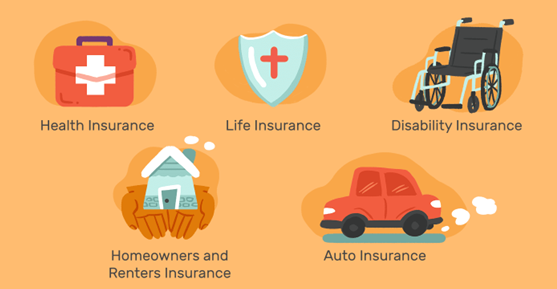
Auto insurance is mandatory and comes in various forms, including comprehensive coverage, third-party liability, and theft or fire insurance, ensuring both vehicle and driver protection. Additionally, property insurance, such as home and contents insurance, safeguards against damage or loss to one’s residence, while travel insurance covers unforeseen incidents during trips. Funeral insurance is prevalent, easing the financial burden of funeral expenses. Personal insurance in South Africa plays a vital role in enhancing individuals’ peace of mind and financial well-being in the face of life’s uncertainties.
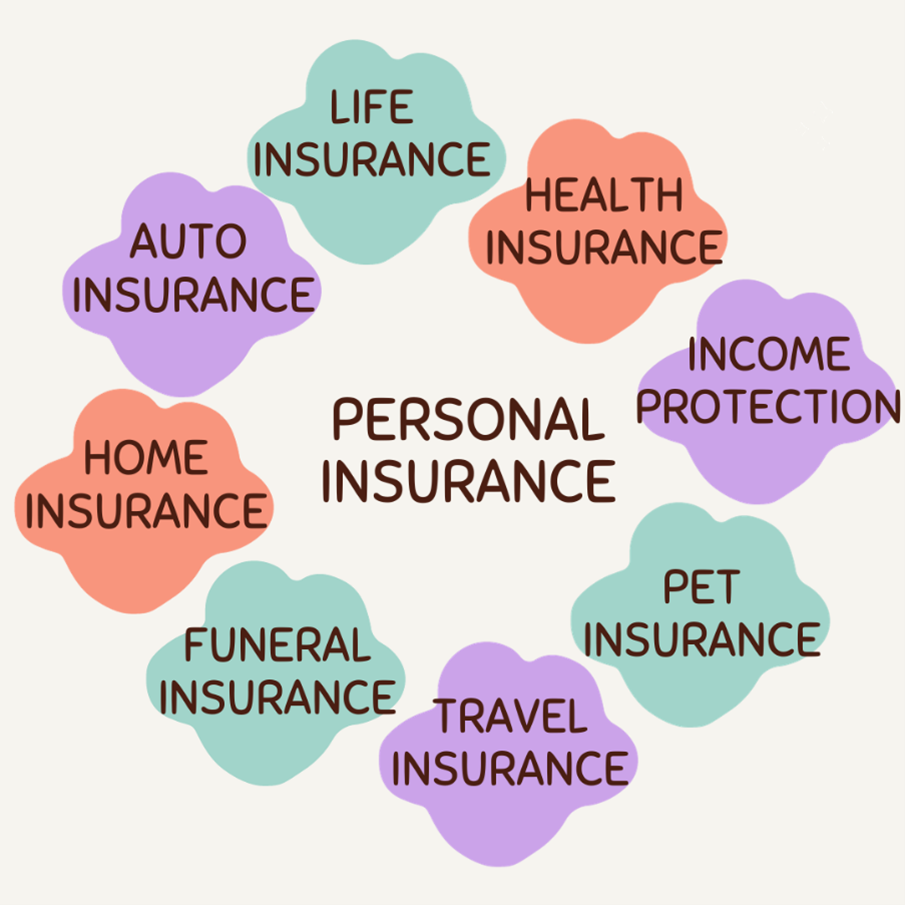
Life Insurance and its Types
Life insurance in South Africa is a fundamental component of personal financial planning, offering individuals and their families financial security and peace of mind. These policies provide a payout, known as the death benefit, to designated beneficiaries upon the policyholder’s death. South Africa’s life insurance market offers a variety of options, including term life insurance, which provides coverage for a specific period, and whole life insurance, which offers lifelong protection with an investment component.
Endowment policies are also popular, combining life coverage with a savings or investment feature. In addition to serving as a safety net for loved ones, life insurance can be used for estate planning, covering outstanding debts, and providing for a comfortable retirement. With its flexibility and ability to adapt to changing financial needs, life insurance remains a vital tool for securing one’s financial future in South Africa. The industry is tightly regulated to ensure fairness and transparency, instilling trust in policyholders and providers alike.
Some well-known life insurance providers in South Africa are:
- Old Mutual
- Sanlam
- Discovery Life
- Hollard Insurance
- Momentum
- Liberty Life
- FNB Life
- African Unity Life

In South Africa, the life insurance market offers a variety of life insurance products to cater to the diverse needs of individuals. Some of the common types of life insurance in South Africa include:
Term Life Insurance: Term life insurance provides coverage for a specific term, such as 10, 20, or 30 years. If the policyholder passes away during the term, the beneficiaries receive a death benefit. Term life insurance is often more affordable than other types.
Whole Life Insurance: Whole life insurance, also known as permanent life insurance, provides coverage for the entire lifetime of the policyholder. It includes a savings or investment component, and policyholders can access the cash value of the policy over time.
Endowment Policies: Endowment policies combine life insurance with a savings or investment feature. These policies pay out a lump sum at the end of a specified term, whether the policyholder survives the term or not. They are often used for long-term savings goals.
Universal Life Insurance: Universal life insurance offers flexibility in premium payments and death benefits. It allows policyholders to adjust their premiums and death benefits over time to adapt to changing financial circumstances.
Funeral Insurance: Funeral cover is a type of life insurance that is specifically designed to cover funeral expenses. It provides a relatively small payout to help ease the financial burden on the family when a policyholder passes away.
Credit Life Insurance: Credit life insurance is often tied to loans or credit agreements. It covers the outstanding debt in case the policyholder dies before the debt is fully repaid, ensuring that the family is not burdened by the debt.
Group Life Insurance: Group life insurance is typically offered by employers to provide life insurance coverage to their employees. It is often a benefit of employment and can vary in terms of coverage amounts.
Key Person Insurance: This type of insurance is taken out by a business on the life of a key employee or owner to protect the company in case of their untimely death.
Child Life Insurance: Child life insurance policies provide coverage for a child’s life. They can help cover funeral expenses or act as a savings vehicle for the child’s future.
Health Insurance and its Types
South Africans can choose from a variety of health insurance plans offered by both private and government-regulated providers. These plans cover medical expenses, including doctor’s visits, hospitalization, surgical procedures, and medication costs. Health insurance not only grants individuals access to private healthcare facilities, which often provide quicker and more specialized care, but it also relieves the financial burden of medical expenses.
Some well-known Health insurance providers in South Africa are:
We talked about Health Insurance and its Types in detail in the Health Care section you can go through it. There are several types of health insurance options available to individuals and families, each designed to meet specific healthcare needs.
- Medical Aid Schemes
- Hospital Cash Plans
- Gap Cover Insurance
- Primary Care Insurance
- Dread Disease Cover
- International Health Insurance
- Funeral Cover with Health Benefits
- Income Protection Insurance

Auto Insurance and its Types
Auto insurance in South Africa is a vital financial safeguard for vehicle owners, serving as a crucial component of responsible driving. It is a legal requirement for all registered vehicles to have at least third-party liability insurance, covering damages or injuries caused to others in the event of an accident. Beyond this basic requirement, South Africans can opt for various auto insurance options, including comprehensive coverage, which offers broader protection, covering damage to their vehicle, theft, and more.
With the country’s challenging road conditions and high rate of accidents, auto insurance not only provides financial security but also peace of mind for drivers. It plays a pivotal role in helping individuals and businesses recover from the financial impact of unexpected events on the road, ensuring that they can get back on track quickly and safely.
Some well-known Auto insurance providers in South Africa are:
- OUTsurance
- Hollard Insurance
- Auto & General Insurance
- Santam Insurance
- Discovery Insure
- MiWay Insurance
- King Price Insurance

In South Africa, there are various types of auto insurance coverage available to meet the needs of vehicle owners. These types of auto insurance include:
Third-Party Liability Insurance: This is the minimum legal requirement for all registered vehicles in South Africa. It covers damages or injuries caused to third parties (other people and property) in an accident for which you are at fault. It does not cover damage to your vehicle.
Comprehensive Auto Insurance: Comprehensive insurance is the most extensive coverage available. It covers damages to your vehicle, theft, and damage caused by events like accidents, fire, hail, and vandalism. It also includes third-party liability coverage.
Third-Party, Fire, and Theft Insurance: This type of insurance provides coverage for damages or loss to your vehicle due to fire or theft, in addition to the basic third-party liability coverage. It does not cover accidents or other types of damage.
Accident-Only Insurance: This is a limited form of coverage that only pays out if your vehicle is damaged in an accident. It does not cover theft, fire, or other events.
Usage-Based Insurance (UBI): UBI is a relatively new concept in South Africa, where your premium is based on how you use your vehicle. Insurers track your driving behavior, such as distance traveled, speed, and braking habits, to determine your premium.
Vintage or Classic Car Insurance: This insurance is designed specifically for vintage or classic cars. It takes into account the unique value and usage of these vehicles, offering specialized coverage options.
Excess Buydown Insurance: This coverage allows you to reduce the excess (the amount you pay out of pocket in the event of a claim) on your standard auto insurance policy.
Motorcycle Insurance: Motorcycle owners can purchase specialized insurance policies to cover their bikes, which may include coverage for theft, damage, and liability.
Truck and Commercial Vehicle Insurance: Owners of commercial vehicles, including trucks, vans, and buses, can obtain insurance tailored to the unique needs and risks associated with these vehicles.
Home Insurance and its Types
Home insurance in South Africa provides homeowners with valuable protection against a range of risks that their properties may face. It typically consists of two main components: building insurance and contents insurance. Buildings insurance covers the physical structure of the home, including the walls, roof, floors, and fixtures, against events like fire, storm damage, vandalism, and other perils.
Contents insurance, on the other hand, protects the personal belongings within the home, such as furniture, electronics, jewelry, and other possessions, from theft, damage, or loss. Home insurance offers peace of mind by ensuring that homeowners can recover financially in the event of unexpected incidents, enabling them to rebuild, repair, or replace their property and belongings.
Some well-known Home insurance providers in South Africa are:
- OUTsurance
- Hollard Insurance
- Standard Bank Home Insurance
- Absa Home Insurance
- Old Mutual Insure
- King Price Home Insurance

Home insurance in South Africa typically includes several types of coverage to protect homeowners and their properties. The primary types of home insurance coverage in South Africa include:
Buildings Insurance: This type of insurance covers the physical structure of your home, including the walls, roof, floors, ceilings, built-in fixtures, and structural components. It provides financial protection against damage or loss caused by events such as fire, lightning, storm damage, flood, vandalism, or theft related to damage to the building itself.
Contents Insurance: Contents insurance covers the personal belongings and possessions within your home, including furniture, appliances, electronics, clothing, and other valuable items. It provides coverage against theft, damage, or loss due to covered perils like fire, burglary, or natural disasters.
Combined Home Insurance: Combined home insurance policies offer both buildings and contents coverage in a single package. This type of insurance is convenient for homeowners who want comprehensive protection for their property and belongings.
Liability Insurance: Liability insurance provides coverage if someone is injured or their property is damaged while on your property. It covers legal expenses and potential settlements if you are found liable for the injury or damage.
Homeowner’s All-Risk Insurance: This type of insurance offers broader coverage for both the structure and contents of your home. It protects against a wider range of risks and is often suitable for high-value homes and possessions.
Landlord Insurance: Landlord insurance is designed for property owners who rent out their homes. It covers the structure of the building, loss of rental income, and liability protection related to the rental property.
Home Office Insurance: Home office insurance is for individuals who operate a business from their home. It covers business-related equipment, liability associated with the home business, and potential income loss.
Travel Insurance and its Types
Travel insurance in South Africa is a crucial financial safety net for both domestic and international travelers. It offers protection against unexpected and unforeseen events that can disrupt travel plans. This includes coverage for medical emergencies, trip cancellations or interruptions, lost or delayed luggage, flight delays, and more. South African travelers can select from a range of travel insurance plans to suit their specific needs and destinations.
Some well-known Travel insurance providers in South Africa are:
- OUTsurance
- Discovery Insure
- TIC (Travel Insurance Consultants)
- AIG South Africa
- First Women Insurance
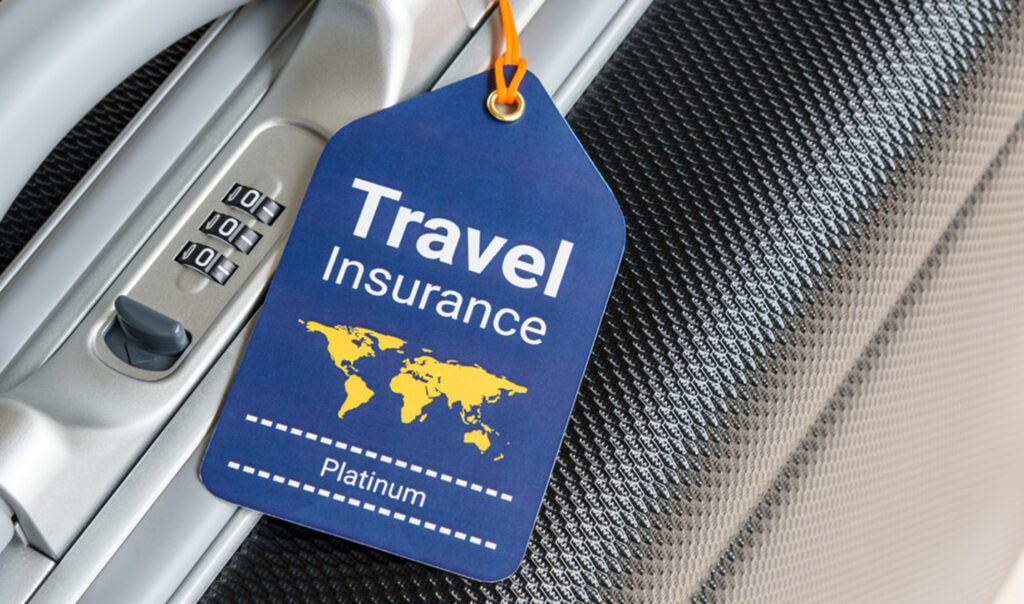
Travel insurance in South Africa comes in various types to cater to the diverse needs of travelers. Here are the primary types of travel insurance you can find in South Africa:
Single-Trip Travel Insurance: This is the most common type of travel insurance and provides coverage for a specific trip, typically covering the duration of the journey from departure to return.
Annual Multi-Trip Travel Insurance: Also known as yearly or frequent traveler insurance, this type of policy covers multiple trips within a specified period (usually a year). It is ideal for individuals who travel frequently.
International Travel Insurance: International travel insurance provides coverage for trips outside of South Africa. It includes protection for medical emergencies, trip cancellations, lost luggage, and more.
Domestic Travel Insurance: Domestic travel insurance is designed for trips within South Africa. It covers similar risks as international travel insurance but applies to domestic journeys.
Business Travel Insurance: Business travel insurance caters to the specific needs of business travelers. It typically includes coverage for work-related incidents and may offer additional benefits like coverage for laptops and business equipment.
Adventure Travel Insurance: Adventure travel insurance is tailored for travelers engaging in high-risk activities such as skiing, mountain climbing, or extreme sports. It provides coverage for injuries or accidents during these activities.
Cruise Travel Insurance: Cruise travel insurance is designed for travelers going on cruises. It covers cruise-specific risks like trip interruptions due to missed ports, medical evacuations from the ship, and itinerary changes.
Senior Travel Insurance: Senior travel insurance is intended for older travelers and may offer specialized coverage for pre-existing medical conditions that affect older individuals.
Family Travel Insurance: Family travel insurance provides coverage for the entire family traveling together, often including children under a certain age at no extra cost.
Group Travel Insurance: Group travel insurance is designed for groups of travelers, such as school trips, tour groups, or corporate travel. It often provides cost savings compared to individual policies.
Student Travel Insurance: Student travel insurance is tailored for students studying abroad or participating in exchange programs. It covers medical emergencies, study interruptions, and other
student-specific risks.
Funeral Insurance and its Components
Funeral insurance in South Africa, also known as burial or final expense insurance, is a specialized form of insurance designed to provide financial assistance to families when they face the emotional and financial burden of arranging a funeral. This type of insurance offers policyholders the peace of mind that their loved ones will have the financial means to cover the costs associated with a funeral, including burial or cremation expenses, coffin or urn costs, transportation, catering, and other related fees.
Funeral insurance policies typically have relatively low premiums, making them accessible to a wide range of individuals, and they offer straightforward application processes with minimal underwriting. For many South Africans, funeral insurance plays a crucial role in ensuring that they can give their departed family members a dignified farewell without incurring significant financial hardship during an already difficult time.
Some well-known Funeral insurance providers in South Africa are:
- AVBOB
- Old Mutual
- Hollard Insurance
- Sanlam
- Metropolitan
- Doves Funeral Insurance
- Assupol
- African Unity Life
- Momentum

Here are some key features of funeral insurance in South Africa:
Affordability: Funeral insurance policies typically have relatively low premiums, making them accessible to a wide range of individuals and families.
Coverage: Funeral insurance policies offer coverage for various funeral-related expenses, including funeral service fees, coffin or urn costs, transportation of the deceased, catering for mourners, and other related fees.
No Medical Exams: Many funeral insurance providers in South Africa offer policies with simplified underwriting processes that do not require extensive medical exams or health checks.
Waiting Period: Most funeral insurance policies have a waiting period, typically ranging from a few months to a year. During this waiting period, the policy may not provide full coverage for natural causes of death.
Family Coverage: Funeral insurance policies often allow policyholders to include multiple family members, such as spouses and children, under the same plan, providing comprehensive coverage for the entire family.
Immediate Payout: When a covered individual passes away, funeral insurance policies typically provide a prompt payout to the beneficiaries, helping them cover the immediate expenses associated with the funeral.
Income Protection Insurance and its Components
Income Protection Insurance in South Africa is a valuable financial safety net for individuals who rely on their income to support themselves and their families. This type of insurance provides a regular income stream to policyholders if they become unable to work due to illness, injury, or disability. It serves as a crucial tool for maintaining financial stability during periods of incapacity, covering essential living expenses such as mortgage or rent, bills, and daily necessities.
Here are some key features and aspects of income protection insurance in South Africa:
Monthly Income Replacement: Income protection insurance pays out a monthly benefit, which is typically a percentage of your regular income. This benefit helps cover essential living expenses, such as mortgage or rent payments, utility bills, groceries, and other necessities.
Coverage for Illness and Injury: Income protection insurance covers a wide range of illnesses and injuries that can hinder your ability to work. Policies may also include optional coverage for specific critical illnesses.
Waiting Period: Most income protection policies have a waiting period before benefits are paid out. During this waiting period, policyholders may need to rely on their savings or sick leave from their employer.
Benefit Period: The benefit period is the length of time during which the policy will pay out monthly benefits. Benefit periods can vary, but they often range from a few years to until retirement age.
Premiums and Occupation Class: The cost of income protection insurance premiums is influenced by factors such as your occupation, age, health, and the amount of coverage you choose. Higher-risk occupations may have higher premiums.

Pet Insurance and Key Aspects
Pet insurance in South Africa is a specialized insurance product that provides financial coverage for the veterinary care and medical expenses of pets. This type of insurance is designed to give pet owners peace of mind by helping to manage the costs associated with unexpected illnesses, accidents, and routine healthcare for their beloved animals. Pet insurance policies in South Africa typically cover a range of veterinary services, including consultations, surgeries, diagnostic tests, and medications.
Some policies may also provide coverage for preventive care, such as vaccinations and annual check-ups. By having pet insurance, South African pet owners can ensure that they can provide the best possible care for their furry family members without worrying about the financial strain that can come with unexpected veterinary expenses.
Some well-known Pet insurance providers in South Africa are:
- Oneplan Pet Insurance
- MediPet
- Not sure
- Hollard Pet Insurance
- Guardrisk Pet Insurance
- Rogz Pet Insurance

Here are some key aspects of pet insurance in South Africa:
Coverage for Veterinary Care: Pet insurance typically covers various veterinary expenses, including consultations, surgeries, diagnostic tests, medications, and hospitalization.
Accidents and Illnesses: Most pet insurance policies offer coverage for both accidental injuries and illnesses that your pet may encounter. This can include treatments for injuries from accidents, infections, chronic conditions, and more.
Routine and Preventive Care: Some policies may offer optional coverage for routine and preventive care, such as vaccinations, flea and tick treatments, dental cleanings, and annual check-ups.
Exclusions: Pet insurance policies may have certain exclusions, such as pre-existing conditions or specific breeds’ hereditary conditions. It’s important to understand these exclusions when choosing a policy.
Choice of Provider: Unlike some human health insurance plans, pet insurance policies often allow you to choose your preferred veterinarian or specialist for your pet’s care.
Commercial Insurance and its Types
Commercial insurance in South Africa is a vital component of risk management for businesses of all sizes and industries. This type of insurance provides financial protection against a wide range of risks and liabilities that businesses may face during their operations. Commercial insurance policies in South Africa typically include coverage for property damage, liability claims, business interruption, and more.
These policies can be tailored to the specific needs of a business, whether it’s a small startup or a large corporation. Having adequate commercial insurance is essential for protecting a business’s assets, reputation, and financial stability in the event of unexpected events such as natural disasters, accidents, or legal disputes. It not only provides financial security but also allows business owners to focus on growth and success with the knowledge that they have a safety net in place.

Property Insurance and its Components
This specialized insurance coverage provides financial protection for commercial properties, including offices, warehouses, factories, retail spaces, and other business premises, against a range of risks and perils. It covers damages caused by events like fires, storms, theft, vandalism, and natural disasters, ensuring that the property owner or business can recover and rebuild without shouldering the entire financial burden.
Commercial property insurance is highly customizable, allowing policyholders to tailor coverage to their specific needs, whether they operate a small business or manage extensive real estate portfolios. In South Africa’s dynamic business environment, this insurance type is essential for mitigating risks and ensuring the continuity of business operations in the face of unforeseen challenges.
Some well-known Commercial insurance providers in South Africa are:
Here are some key aspects of property insurance in South Africa:
Coverage for Property Damage: Property insurance policies typically cover damages caused by perils such as fire, theft, vandalism, and natural disasters.
Contents Insurance: In addition to covering the structure itself, property insurance often includes coverage for the contents of the property, including personal belongings, furniture, appliances, and valuable items.
Liability Coverage: Many property insurance policies include liability coverage, which protects policyholders against legal claims and financial obligations if someone is injured or their property is damaged while on the insured property.
Optional Coverage: Property owners can often customize their insurance coverage with optional add-ons. These might include coverage for specific valuables, home office equipment, or additional protection against certain risks.
Deductibles: Policyholders are typically responsible for paying a deductible before the insurance coverage kicks in. The deductible amount can vary depending on the policy.
Business Property Insurance: For businesses, property insurance can also cover commercial properties, including offices, warehouses, and retail spaces, as well as their contents.
Rental Property Insurance: Landlords can secure insurance for rental properties to protect against property damage, liability claims, and potential rental income loss.
Liability Insurance and its Components
Liability insurance, when offered as a commercial product in South Africa, plays a critical role in protecting businesses from financial burdens resulting from legal claims and liabilities. This insurance type encompasses various forms, each tailored to address specific aspects of liability risks that companies may face. Commercial liability insurance includes general liability coverage, which safeguards businesses against third-party bodily injury and property damage claims.
It also extends to professional liability insurance, commonly known as errors and omissions (E&O) insurance, which shields professionals from legal repercussions related to mistakes or negligence in their services. In a litigious business environment, liability insurance is a cornerstone of risk management, helping companies maintain their financial stability and reputation by covering legal costs, settlements, and judgments arising from lawsuits or liability claims.
General Liability Insurance: General liability insurance, often referred to as public liability insurance, provides coverage for third-party bodily injury, property damage, and personal injury claims.
Professional Liability Insurance (Errors and Omissions Insurance): Professional liability insurance, or E&O insurance, is crucial for professionals and businesses offering specialized services, such as doctors, lawyers, consultants, and architects.
Product Liability Insurance: Product liability insurance is essential for businesses that manufacture or distribute products. It protects against claims arising from product defects, design flaws, or injuries caused by using the product.
Directors and Officers (D&O) Insurance: D&O insurance shields company directors and officers from personal liability in cases of alleged wrongful acts or decisions made in the course of their duties.
Employment Practices Liability Insurance (EPLI): EPLI covers claims related to employment-related issues, such as wrongful termination, discrimination, sexual harassment, and wage disputes.
Business Interruption Insurance and its Components
This insurance coverage is designed to provide financial support when a business is forced to temporarily close or reduce its operations due to covered events, such as fires, natural disasters, or other perils. Business Interruption Insurance typically covers lost income, ongoing expenses, and additional costs incurred during the period of disruption. This ensures that businesses can continue to meet their financial obligations, including employee salaries and rent, even when their revenue is severely impacted.
Some well-known Commercial insurance providers in South Africa are:

Here are some key points about Business Interruption Insurance in South Africa:
Income Replacement: This insurance helps replace lost income that the business would have earned had the interruption not occurred. It ensures that businesses can continue to pay salaries, rent, and other fixed expenses during the disruption.
Additional Expenses: Business Interruption Insurance may also cover additional expenses incurred to minimize the impact of the interruption or to expedite the resumption of operations. This can include costs related to temporary relocation, rental of equipment, or overtime wages.
Indemnity Period: Policies include an indemnity period, which is the maximum period during which the insurance will cover losses resulting from the interruption. It is essential to choose an appropriate indemnity period that aligns with the expected time it will take to return to normal operations.
Workers’ Compensation Insurance and its Components
This insurance is designed to compensate employees who suffer injuries or illnesses on the job, ensuring that they receive appropriate medical care and wage replacement while shielding employers from potential lawsuits. In South Africa, the Compensation for Occupational Injuries and Diseases Act (COIDA) makes it compulsory for most employers to provide Workers’ Compensation Insurance.
his coverage not only supports injured workers but also helps maintain workplace safety standards. In the event of a workplace accident or occupational illness, Workers’ Compensation Insurance plays a vital role in providing financial security to employees and ensuring that businesses comply with legal obligations in South Africa’s complex labor landscape.
Here are some key aspects of Workers’ Compensation Insurance in South Africa:
Compulsory Coverage: The Compensation for Occupational Injuries and Diseases Act (COIDA) makes it mandatory for most employers to provide Workers’ Compensation Insurance for their employees. This requirement applies to both public and private sector employers.
Administration: Workers’ Compensation Insurance is administered through the Compensation Fund, which is a government entity overseen by the South African Compensation Commissioner.
Exclusivity Principle: In exchange for the benefits provided by Workers’ Compensation Insurance, employees generally waive their right to sue their employers for workplace injuries or illnesses.
Compensation Process: In the event of a work-related injury or illness, the injured employee or their dependents can file a claim with the Compensation Fund. The fund assesses the claim, determines eligibility for benefits, and processes payments accordingly.
Penalties: Non-compliance with COVID-19 can result in penalties for employers, including fines and potential legal action.

Cyber Insurance and its Components
Cyber Insurance is a specialized coverage designed to protect businesses from the financial fallout of cyberattacks, data breaches, and other cyber-related incidents. In an increasingly digital world, where businesses rely heavily on technology and data, this insurance plays a critical role in risk management. South African businesses face growing cyber threats, making Cyber Insurance essential.
It typically covers expenses related to data breach notifications, legal and regulatory compliance, data recovery, and damage to a company’s reputation. Moreover, Cyber Insurance can also provide liability coverage in case a business is held responsible for the loss of sensitive customer or employee data. With the ever-evolving nature of cyber risks, Cyber Insurance is a vital tool for businesses to safeguard their operations and customer trust in an age of digital vulnerabilities.
Some well-known Cyber insurance providers in South Africa are:
Here are some key points about Cyber Insurance in South Africa:
Coverage Scope: Cyber Insurance policies in South Africa typically cover a range of cyber risks, including data breaches, ransomware attacks, business interruption due to cyber incidents, network security breaches, and more.
Data Breach Response: Cyber Insurance often includes coverage for expenses related to data breach response, such as notifying affected individuals, providing credit monitoring services, and managing public relations efforts to mitigate reputational damage.
Business Interruption: This coverage helps businesses recover lost income and cover additional expenses incurred as a result of a cyber incident that disrupts normal operations.
Legal and Regulatory Compliance: Cyber Insurance can cover legal expenses associated with defending against cyber-related lawsuits and regulatory fines for non-compliance with data protection laws.
Reputation Management: Some policies offer coverage for reputation management and public relations efforts to restore a business’s reputation following a cyber incident.
Tailored Coverage: Businesses can often customize their Cyber Insurance policies to align with their specific cyber risk profiles and industry-specific needs.

Directors and Officers (D&O) Insurance and its Components
Directors and Officers (D&O) Insurance is a crucial coverage designed to protect individuals serving as directors, officers, or executives in a company. This insurance shields these leaders from personal liability in cases of alleged wrongful acts or decisions made in the course of their duties. D&O Insurance is especially relevant in today’s complex business environment, where corporate governance and legal accountability are paramount.
In South Africa, where businesses face a dynamic and evolving regulatory landscape, D&O Insurance provides a safety net for directors and officers, allowing them to make important decisions without the constant fear of personal financial exposure. It also plays a pivotal role in attracting top talent to leadership roles and ensuring that businesses can access experienced individuals who can drive growth and success.
Here are some key aspects of D&O Insurance in South Africa:
Coverage Scope: D&O Insurance typically covers legal expenses, judgments, settlements, and other costs associated with defending against lawsuits or regulatory actions brought against directors and officers for alleged wrongful acts.
Protection for Personal Assets: D&O Insurance safeguards the personal assets of directors and officers, such as their homes, savings, and investments, in case they are personally sued in connection with their role in the company.
Types of Policies: D&O Insurance can be structured in various ways, including Side A, Side B, and Side C coverage. Side A coverage protects individual directors and officers when the company cannot indemnify them.
Legal and Regulatory Environment: D&O Insurance is especially important in South Africa’s corporate landscape, where directors and officers face complex legal and regulatory requirements.
Recruitment and Retention: D&O Insurance is a valuable tool for attracting and retaining top talent in leadership roles. Talented individuals may be reluctant to serve as directors or officers without this protection in place.
Marine and Cargo Insurance and its Components
Marine and Cargo Insurance plays a pivotal role in protecting businesses engaged in shipping, logistics, and international trade. South Africa, with its strategic location and bustling ports, is a hub for maritime commerce. Marine and Cargo Insurance provides coverage for goods transported by sea, air, or land, safeguarding businesses from the financial losses that can result from various perils, including accidents, theft, natural disasters, and even piracy.
This coverage not only ensures that cargo owners can recover their financial losses when shipments are damaged or lost but also fosters confidence and security in international trade. In South Africa’s dynamic and interconnected global economy, Marine and Cargo Insurance is an indispensable tool for businesses to manage the risks associated with the movement of goods across borders and oceans, facilitating the smooth flow of trade and commerce.
Some well-known Marine and Cargo insurance providers in South Africa are:
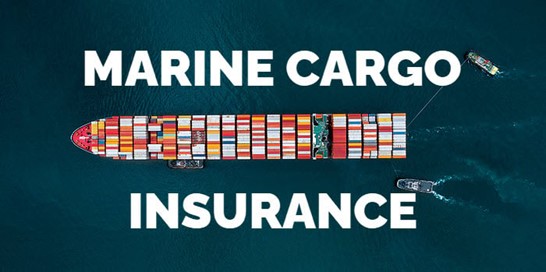
Here are some key aspects of Marine and Cargo Insurance in South Africa:
Coverage Scope: Marine and Cargo Insurance policies typically cover a range of risks, including damage to cargo due to accidents, theft, natural disasters, mishandling, and other perils that can occur during transit.
Types of Coverage: There are various types of Marine and Cargo Insurance policies available, including voyage policies that cover a single shipment and open cargo policies that provide continuous coverage for an insured’s ongoing cargo shipments.
Importance of Ports: South Africa’s strategic location with several major ports, including Durban, Cape Town, and Port Elizabeth, makes Marine and Cargo Insurance particularly important for businesses involved in import and export activities.
Protection for Cargo Owners: Cargo owners, including importers and exporters, benefit from this insurance as it helps them recover the value of their goods in case of damage or loss during transit.
Risk Mitigation: Marine and Cargo Insurance assists in mitigating the financial risks associated with international trade and logistics, ensuring that businesses can recover their losses and continue their operations.
Environmental Liability Insurance
Environmental Liability Insurance serves as a critical safeguard for businesses against the potential financial consequences of environmental liabilities. South Africa, with its diverse industries and natural resources, faces unique environmental risks and regulatory challenges. This insurance coverage helps businesses mitigate the financial risks associated with environmental incidents, such as pollution, contamination, or habitat damage, that can result from their operations.
It can cover the costs of cleanup, remediation, legal fees, and fines incurred as a result of environmental liabilities. In a country where environmental regulations are stringent and constantly evolving, Environmental Liability Insurance offers businesses the peace of mind that they can address environmental issues while maintaining their financial stability and reputation, aligning with the growing global focus on sustainable and responsible business practices.
Some well-known Environmental Liability Insurance providers in South Africa are:
South Africa’s Housing System
- Overview of South Africa’s Housing System
- Types of Houses in South Africa
- Ways to Own a Home in South Africa
- Stakeholders in Housing System
Overview of South Africa’s Housing System
The housing system in South Africa is a complex and multifaceted issue that reflects the country’s historical legacy of apartheid and ongoing socio-economic challenges. Since the end of apartheid in 1994, South Africa has made significant efforts to address housing disparities and provide access to adequate shelter for all its citizens. The government introduced various policies and programs, such as the Reconstruction and Development Program (RDP) and the National Housing Code, aimed at increasing the availability of affordable housing and improving housing conditions for marginalized communities.
However, despite these initiatives, the country still faces a substantial housing backlog, with millions of people living in informal settlements lacking access to basic amenities. The government continues to grapple with the need to balance the demand for housing with limited resources and to address the systemic issues of inequality, land reform, and urbanization that contribute to the housing challenges in South Africa.
South Africa is a vastly unequal society with a sharp divide between rich and poor. As a result, housing in South Africa ranges from make-shift homes, often constructed from tin, in informal settlements to concrete and glass mansions in affluent suburbs. Between these extremes is a range of properties to suit most tastes and budgets. Depending on the strength of your home currency, you might find South African property is both cheaper and larger than what you are used to.
While the country’s constitution guarantees everyone’s right to adequate housing, there is a housing shortage. The Department of Human Settlements reports that the government has built 3.5 million free homes since the advent of democracy in 1994, but there is still an estimated backlog of two million more.
The South African government, in collaboration with various stakeholders, continues to work towards improving the housing system. They focus on innovative solutions, including public-private partnerships and community-led initiatives, to provide affordable housing, upgrade informal settlements, and create sustainable urban environments. While progress has been made, the challenge of ensuring adequate and affordable housing for all remains a critical priority in South Africa’s ongoing journey towards social and economic equality.
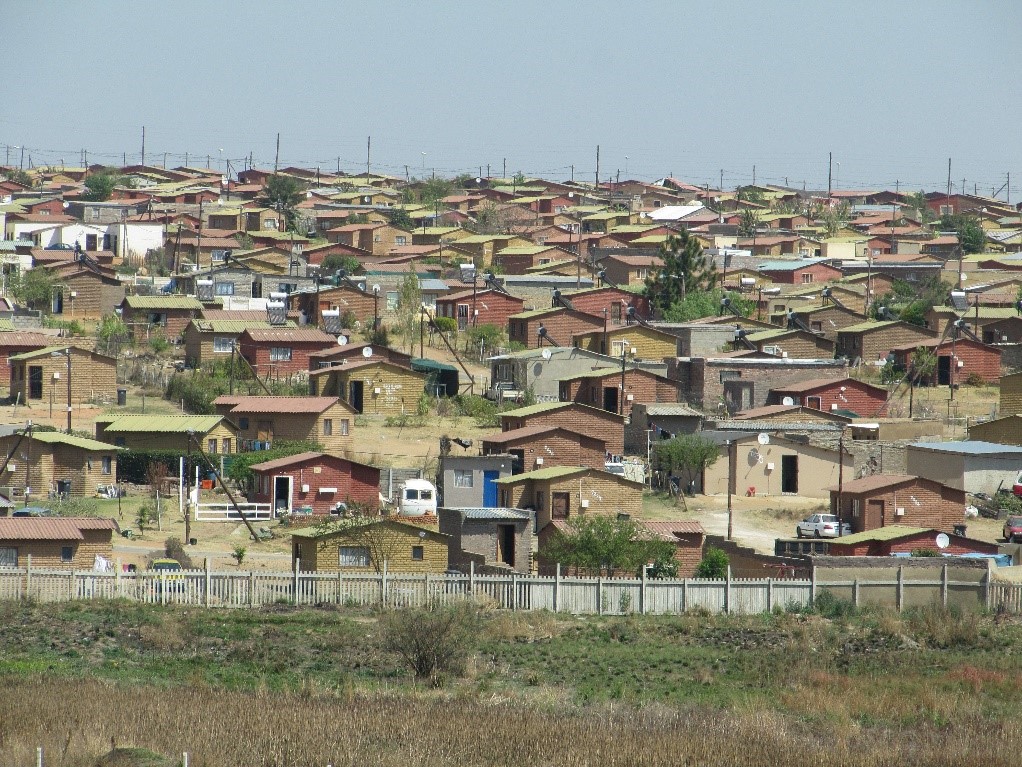
Types of Houses in South Africa
South Africa boasts a diverse range of housing types, reflecting its rich cultural, geographical, and historical influences. In urban areas, you can find modern apartment buildings, townhouses, and suburban homes, often featuring contemporary architectural styles. Traditional housing includes thatched-roof rondavels, especially prevalent in rural areas and among some indigenous communities. Cape Dutch architecture, characterized by its distinctive gabled roofs and white-painted walls, is a hallmark of homes in the Western Cape.
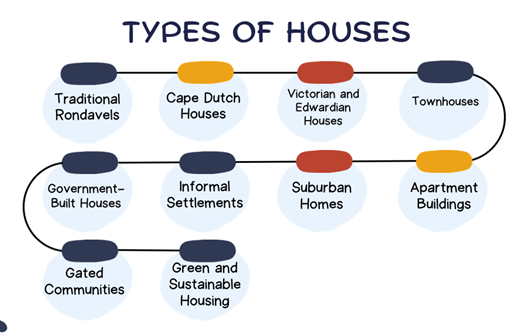
The country’s colonial history is evident in Victorian and Edwardian-style houses, while the influence of apartheid-era policies can be seen in townships and informal settlements where informal shacks and modest government-built houses are common. South Africa’s housing landscape is thus a fascinating tapestry of architectural diversity, reflecting its complex history and multicultural society.
South Africa features a wide array of housing types, reflecting its diverse cultural, historical, and geographical influences:
Traditional Rondavels: Traditional Rondavels are iconic and time-honored housing structures in South Africa, particularly among rural and indigenous communities. These distinctive round huts are crafted from locally sourced materials, such as mud, thatch, and sometimes stone, making them ecologically sustainable and well-suited to the local environment. Rondavels are known for their conical thatched roofs, which provide excellent insulation against both heat and cold, making them suitable for various climates.
Inside, a central supporting pole creates an open, airy space, while the circular design represents harmony and unity. Rondavels not only serve as homes but also play significant roles in cultural ceremonies and rituals, underscoring their deep cultural and historical significance in South Africa’s architectural tapestry.
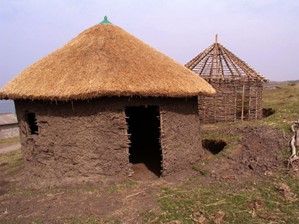
Cape Dutch Houses: Cape Dutch Houses are an iconic architectural style that has left an indelible mark on the housing landscape of South Africa, particularly in the Western Cape region. These distinctive homes are characterized by their symmetrical design, whitewashed walls, and ornate gabled roofs, which are often adorned with decorative elements. The Cape Dutch architectural style draws its inspiration from Dutch colonial influences and blends them with practical features suited to the local climate. The gabled roofs, for instance, are designed to provide shade and protect against the region’s frequent rains. Cape Dutch Houses are often accompanied by lush gardens, reflecting the historical importance of horticulture in this region. These homes offer a glimpse into South Africa’s colonial past and continue to be cherished for their unique charm and historical significance
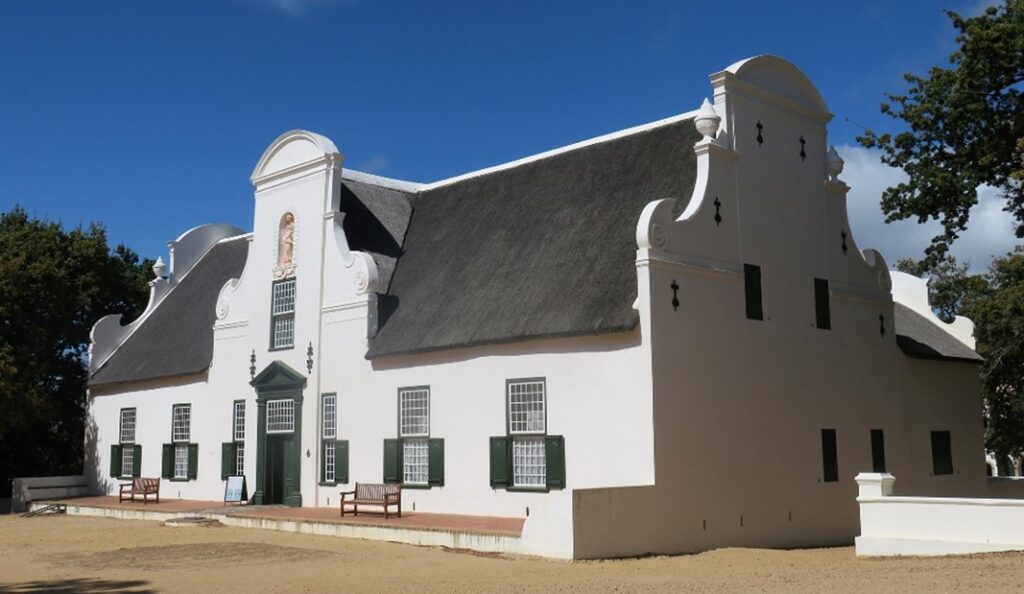
Victorian and Edwardian Houses: Victorian and Edwardian Houses are a captivating testament to South Africa’s colonial history, particularly in older urban neighborhoods. These architectural styles, imported from Britain during the 19th and early 20th centuries, are characterized by their ornate and detailed designs. Victorian homes often feature bay windows, decorative woodwork, and intricate wrought-iron features, while Edwardian houses are more streamlined with cleaner lines and simpler designs. Both styles reflect the affluence and elegance of their respective eras.
These homes typically occupy spacious plots with well-tended gardens, showcasing a connection to nature and outdoor living. Victorian and Edwardian Houses not only provide a glimpse into South Africa’s colonial past but also contribute to the distinctive character and charm of many historic neighborhoods in the country’s cities and towns.
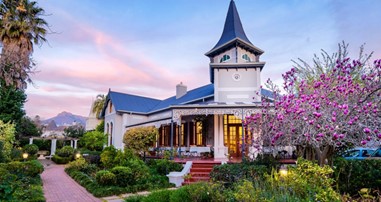
Townhouses: Townhouses have become a prevalent and practical housing option in South Africa’s urban landscape. These multi-story residences are characterized by their shared walls and compact design, making efficient use of limited urban space. They offer a middle ground between single-family homes and apartment living, making them popular among both young professionals and families. Townhouses in South Africa can vary widely in architectural style, from modern and minimalist designs to more traditional facades, often reflecting the character of the neighborhood they are situated in. With the added benefit of communal amenities and security features, townhouses provide residents with a convenient, low-maintenance housing solution while contributing to the urban fabric of South African cities and suburbs.
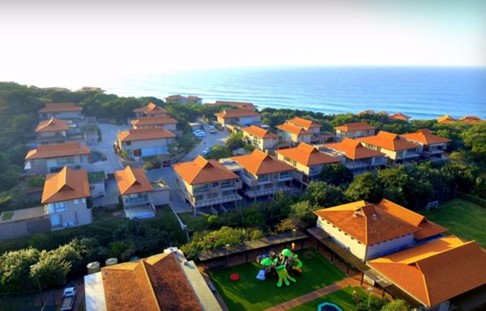
Apartment Buildings: Apartment buildings are a prominent and essential component of South Africa’s housing landscape, especially in its bustling urban centers. These multi-story structures provide a range of housing options, from compact studios to spacious penthouses, catering to the diverse needs of the population. South African apartment buildings showcase a wide array of architectural styles, with modern, glass-clad skyscrapers towering over the cityscapes, and more traditional, low-rise complexes blending into older neighborhoods. The appeal of apartment living lies in its convenience, proximity to urban amenities, and often, secure access and shared facilities such as gyms, swimming pools, and communal areas. As urbanization continues to shape South Africa’s demographic landscape, apartment buildings play a pivotal role in accommodating the growing population and contributing to the vibrancy and dynamism of its urban areas.
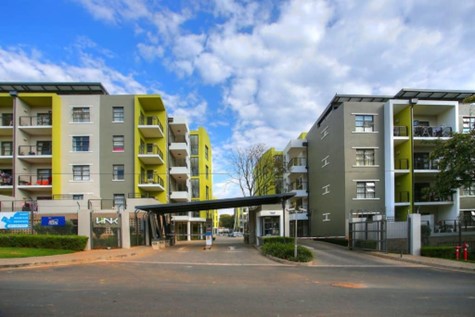
Suburban Homes: Suburban homes are a prevalent and sought-after housing option in South Africa, particularly in the outskirts of major cities and towns. These residences are typically characterized by their spaciousness, private yards, and a variety of architectural styles, ranging from modern designs to more traditional aesthetics. Suburban living offers a balance between urban convenience and a quieter, more family-friendly environment. Many suburban areas boast well-maintained parks, schools, and shopping centers, making them attractive to families seeking a comfortable and community-oriented lifestyle. South African suburban homes often reflect a blend of cultural and architectural influences, creating a diverse and vibrant housing landscape that caters to a wide range of tastes and preferences.

Informal Settlements: Informal settlements are a stark and challenging aspect of South Africa’s housing landscape. These settlements consist of makeshift and often overcrowded dwellings, predominantly constructed from corrugated metal, wood, and other found materials. They typically lack basic services like running water, sanitation, and electricity, leading to harsh living conditions. Informal settlements have emerged due to a combination of factors, including rapid urbanization, high unemployment rates, and a shortage of affordable housing. Despite government efforts to upgrade and formalize these settlements, millions of South Africans continue to reside in informal housing, facing numerous socio-economic challenges. Addressing the housing needs of these communities remains a critical priority for South Africa’s government as it strives to improve living conditions and reduce inequality in the country.
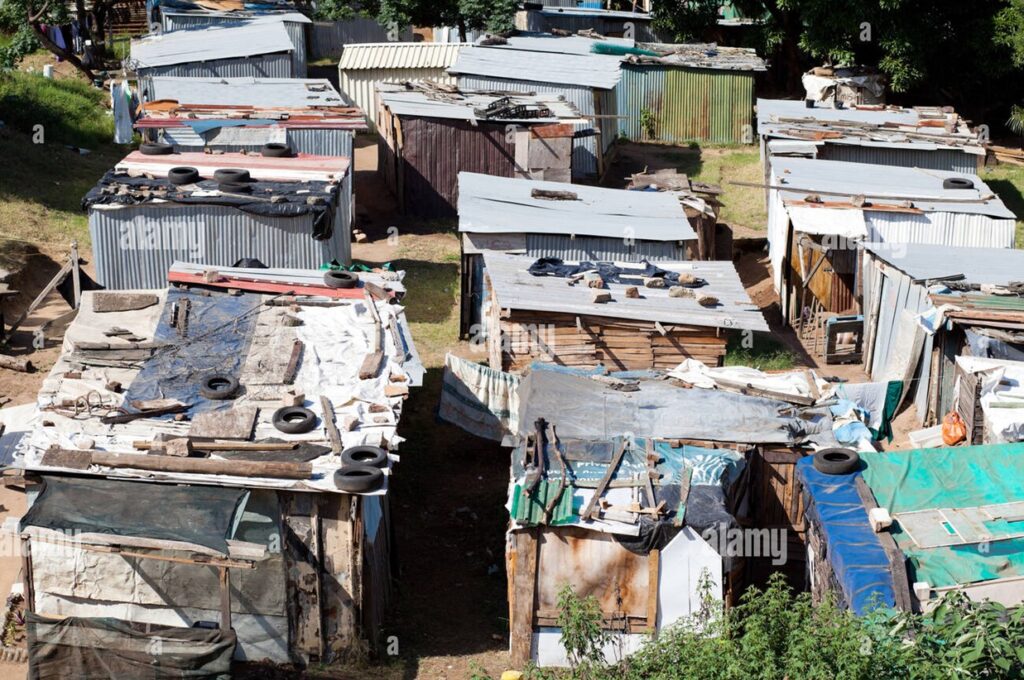
Government-Built Houses:
Government-built houses play a pivotal role in addressing South Africa’s housing challenges, particularly in providing affordable housing to low-income communities. These houses are typically part of government initiatives such as the Reconstruction and Development Program (RDP) and the Breaking New Ground (BNG) program, aimed at addressing housing disparities and improving living conditions. Government-built houses come in various styles and sizes, often designed to accommodate the diverse needs of South Africa’s population. While they have made significant strides in providing shelter and basic amenities to many previously marginalized citizens, challenges remain, including issues related to maintenance, infrastructure, and the need to balance supply with the growing demand for housing. Nevertheless, government-built houses are a crucial component of South Africa’s housing system, representing an ongoing commitment to providing affordable and decent housing for all its citizens.
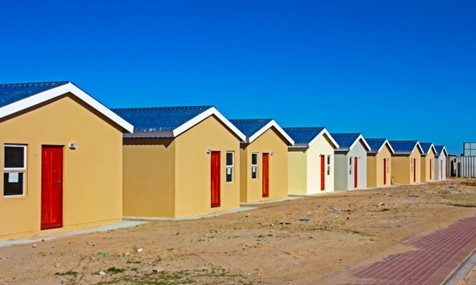
Gated Communities: Gated communities have become increasingly prevalent in South Africa, offering a distinct type of housing often associated with security, exclusivity, and modern amenities. These communities are typically comprised of individual homes, townhouses, or apartments, all enclosed within a secure perimeter, often with controlled access points and 24/7 security services. Gated communities appeal to those seeking a sense of safety and privacy in an otherwise dynamic urban environment. They often feature communal facilities such as parks, swimming pools, and clubhouses, fostering a strong sense of community among residents. While they offer a desirable lifestyle for many, the proliferation of gated communities has sparked debates about social exclusion and inequality in South Africa, as they can contribute to spatial and economic segregation within cities and towns.
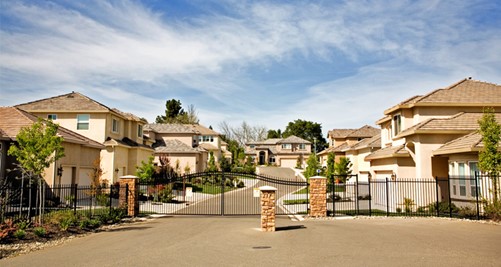
Green and Sustainable Housing: Green and sustainable housing practices are gaining momentum in South Africa as the country places greater emphasis on environmental conservation and energy efficiency. These types of houses are designed with a focus on reducing their ecological footprint, incorporating features like solar panels, rainwater harvesting systems, and energy-efficient appliances. Additionally, sustainable homes often use eco-friendly construction materials that promote energy efficiency and insulation. South Africa’s push towards sustainable housing aligns with global efforts to combat climate change and reduce energy consumption. Moreover, many of these green building practices help reduce utility costs for homeowners over the long term, making them financially appealing. As environmental awareness continues to grow, green and sustainable housing options are becoming increasingly popular in South Africa, reflecting a commitment to a more eco-conscious and energy-efficient future.
Ways to Own a Home in South Africa
In South Africa, there are several pathways to homeownership, catering to the diverse needs and financial situations of its population. The most common method is through outright purchase, where individuals buy a property using their savings or with the help of a mortgage loan from banks and financial institutions. Mortgage bonds are prevalent and allow buyers to pay off their homes over time while gaining full ownership. Government initiatives, such as the Reconstruction and Development Programme (RDP) and the Breaking New Ground (BNG) initiative, offer housing subsidies and support for low-income citizens, making homeownership more accessible.
Shared ownership schemes, like cooperative housing and community-driven initiatives, provide collaborative opportunities for property ownership. Rent-to-own arrangements allow individuals to rent a property with an option to purchase it later, easing the financial burden. Additionally, property inheritance and informal settlement upgrading programs contribute to diverse avenues for South Africans to achieve their homeownership aspirations, reflecting the country’s commitment to addressing housing disparities.
Outright Purchase: Outright purchase is one of the most straightforward and common ways to become a homeowner in South Africa. In this method, individuals or families use their own savings, inheritance, or financial support from family members to buy a property. This approach offers immediate and complete ownership of the home, providing individuals with full control over their property from day one. While it requires a significant upfront financial commitment, outright purchase is often considered a wise investment as it eliminates the need for ongoing mortgage payments and interest fees. It also allows homeowners to build equity over time and gives them the freedom to make alterations or improvements to the property without restrictions.
Mortgage Bond: A mortgage bond is a widely used and accessible means of homeownership in South Africa. Many individuals and families opt for this method to acquire a home, especially when they may not have the full purchase price available upfront. With a mortgage bond, individuals make a down payment, typically a percentage of the property’s price, and secure a loan from a bank or financial institution to cover the remaining cost. This loan is then repaid over an agreed-upon period, often spanning several years, through regular monthly installments. Once the mortgage is fully paid, homeowners gain complete ownership of the property. While mortgage bonds require a commitment to monthly repayments and accrue interest over time, they offer a practical way for a broader segment of the population to achieve homeownership in South Africa, making it a vital part of the country’s housing landscape.
Government Subsidized Housing: Government-subsidized housing initiatives have played a crucial role in expanding homeownership opportunities in South Africa, particularly for low and middle-income individuals and families. Programs like the Reconstruction and Development Programme (RDP) and the Breaking New Ground (BNG) initiative are designed to make housing more accessible and affordable. These initiatives provide financial support and subsidies to eligible citizens, reducing the financial burden of acquiring a home. Government-subsidized housing often comes in the form of newly constructed or renovated homes, offering a decent standard of living with essential amenities. However, these programs typically have specific eligibility criteria, including income thresholds, and demand often exceeds supply, leading to waiting lists.
Shared Ownership: Shared ownership arrangements provide an innovative way for individuals in South Africa to become homeowners, especially when facing financial constraints. These arrangements, which include cooperative housing and community-based initiatives, allow multiple parties to jointly own and manage a property. Participants typically pool their resources to acquire a home collectively, making it more affordable and lessening the individual financial burden. Shared ownership schemes often foster a sense of community and shared responsibility among residents. While these arrangements can vary in structure, they offer an inclusive pathway to homeownership that aligns with the country’s goals of addressing housing disparities and promoting social cohesion.
Rent-to-Own: Rent-to-own arrangements offer a flexible and accessible path to homeownership in South Africa. In these agreements, tenants rent a property with an option to purchase it at a later date, usually after a predetermined rental period. A portion of the monthly rent payments is often credited toward the property’s purchase price, helping tenants build equity over time. This approach can be especially advantageous for individuals who may not have the upfront capital for a down payment or those looking to test out a property before committing to ownership. Rent-to-own agreements provide the opportunity to become familiar with a home and its neighborhood, making an informed decision about permanent ownership.
Informal Settlement Upgrading: Informal settlement upgrading programs are a significant way for residents in these marginalized communities to gain more secure housing and ownership rights in South Africa. These programs, initiated by the government and various NGOs, aim to formalize informal settlements by providing residents with legal ownership of the land they occupy. They also aim to improve living conditions by installing essential infrastructure like water, sanitation, and electricity. Residents are often encouraged to participate in the upgrade process, which can involve the construction of more durable homes or the provision of subsidies to support residents in building or upgrading their dwellings.
Property Inheritance: In this method, individuals inherit properties from family members, often parents or grandparents, which can include family homes, vacant land, or other real estate assets. Property inheritance can be a significant means of obtaining homeownership without the need for a direct purchase. However, it can also come with challenges related to property management, legal complexities, and potential disputes among heirs. Nonetheless, the inheriting property allows individuals to establish a sense of home and ownership, often within a familial or cultural context, and can be an essential way for many South Africans to access housing and real estate assets.
Stakeholders in Housing System
The housing system in South Africa involves a diverse array of stakeholders, each playing a crucial role in shaping the country’s housing landscape. The South African government, at various levels, holds a central position in housing matters, with responsibilities ranging from policy development and regulation to funding and implementation of housing programs. Local municipalities are essential stakeholders responsible for land allocation, zoning regulations, and service provision within their jurisdictions.
Non-governmental organizations (NGOs) and community-based organizations (CBOs) work tirelessly to advocate for housing rights, provide support services, and empower marginalized communities. Financial institutions, such as banks and mortgage lenders, are integral in facilitating access to housing finance. Real estate developers, construction companies, and property management firms drive housing supply and infrastructure development. Additionally, residents, homeowners, and tenants themselves are active stakeholders whose voices and choices profoundly impact housing outcomes, affordability, and living conditions.
Finally, international organizations and donors often provide funding and technical support for housing projects, contributing to efforts aimed at addressing housing disparities and improving housing conditions in South Africa. The collaboration and coordination among these diverse stakeholders are essential in achieving the country’s housing goals and ensuring equitable access to adequate housing for all.
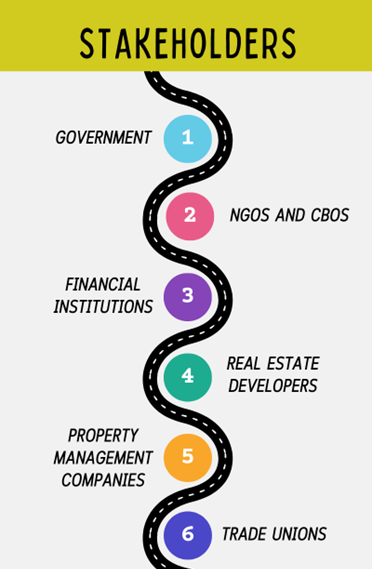
Government: At the national level, the Department of Human Settlements is responsible for developing and overseeing housing initiatives aimed at addressing housing disparities and providing affordable housing options. The government allocates substantial resources for housing programs, including subsidies, grants, and funding for infrastructure development in both urban and rural areas.
Additionally, local municipalities manage land use and zoning regulations, ensuring that housing projects align with regional planning and infrastructure requirements. Through its various departments and agencies, the government actively engages with non-governmental organizations, community-based groups, and international partners to promote equitable access to adequate housing and improve living conditions for all South Africans.
NGOs and CBOs: These organizations play a vital role in assisting vulnerable populations in accessing adequate housing, providing support services, and empowering communities to engage in housing-related initiatives. NGOs and CBOs often collaborate with government agencies to design and implement housing projects, ensuring that they meet the specific needs of disadvantaged groups. They also engage in advocacy and policy work, highlighting housing issues on a broader scale and advocating for the rights of individuals and families who face housing challenges. Their grassroots efforts contribute significantly to addressing housing disparities, fostering community development, and advocating for the realization of housing as a fundamental human right in South Africa.
The famous NGO’s and CBO’s in South Africa are:
- https://www.habitat.org/where-we-build/south-africa
- SOCRRA (South African Council of Religious Rights and Affairs)
- Ndifuna Ukwazi
- SERI (Socio-Economic Rights Institute of South Africa)
Financial Institutions: These institutions, including banks, credit unions, and mortgage lenders, provide essential housing finance options that enable individuals and families to purchase homes. They offer mortgage loans with varying terms and interest rates, making homeownership achievable even for those who may not have the full purchase price upfront. Financial institutions also assist developers by providing construction loans, which contribute to the housing supply. Their involvement in housing finance is critical for boosting the housing market, economic growth, and job creation. However, their practices and lending policies also play a role in determining affordability, making them important stakeholders in shaping the accessibility and stability of housing in South Africa.
The famous Financial Institutions in South Africa are:
Real Estate Developers: These developers play a pivotal role in planning, designing, and constructing housing developments that cater to a diverse range of housing needs and preferences. They are responsible for creating housing estates, apartment complexes, and other residential properties, often in response to market demand. Real estate developers also engage in infrastructure development, including roads, utilities, and community amenities, which contribute to the overall quality of life for residents. Their activities drive economic growth, create jobs, and influence housing affordability and availability in South Africa. However, their practices can also impact urbanization, sustainability, and the overall character of communities, making them important stakeholders in the country’s housing ecosystem.
The famous Real Estate Developers in South Africa are:
- Pam Golding Properties
- Rawson Property Group
- Seeff Properties
- Lew Geffen Sotheby’s International Realty
- Remax South Africa
- Jawitz Properties
Property Management Companies: They are responsible for various tasks, including rent collection, property maintenance, tenant communication, and ensuring that rental properties comply with legal and regulatory standards. Property management companies contribute to the overall quality of housing by ensuring that properties are well-maintained and safe for occupancy. Their services are particularly valuable for property investors who may not have the time or expertise to manage their properties themselves. By facilitating efficient property management, these companies enhance the rental market’s stability and reliability, benefiting both property owners and tenants in South Africa.
The famous Property Management Companies in South Africa are:
- Trafalgar
- Just Property
- Seeff Property Services
- Harcourts South Africa
- Wakefields Property Management
Trade Unions: These unions play a crucial role in advocating for affordable and safe housing options for workers, especially in urban areas where housing costs can be prohibitive. They negotiate with employers and government bodies to ensure that housing allowances and benefits are fair and adequate to meet the needs of employees. Additionally, trade unions often engage in collective bargaining to secure better working conditions and higher wages, which can directly impact workers’ ability to access decent housing. Their efforts are instrumental in addressing housing disparities and promoting social and economic justice within the South African housing landscape.
